Attracting Hummingbirds to Your Garden
Have you ever stood in your garden, mesmerized by the quick flashes of color that zip by? Those delightful little creatures are hummingbirds, and attracting them to your outdoor space can transform your garden into a vibrant haven. In this article, we’ll explore effective strategies for enticing these enchanting birds, enhancing your garden with not just their presence, but also the joy and beauty they bring. Imagine sipping your morning coffee while watching these acrobatic flyers dart from flower to flower, their iridescent feathers glinting in the sunlight. Sounds magical, right? Well, it’s all possible with a few thoughtful tweaks to your gardening approach!
First off, it’s essential to understand what hummingbirds are looking for. They are primarily attracted to nectar-rich flowers and feeders filled with sugar water. By selecting the right plants and setting up feeders in strategic locations, you can create an inviting environment that not only attracts hummingbirds but also enhances the aesthetic appeal of your garden. Let’s dive into the key elements that will help you create a hummingbird-friendly space!
When it comes to attracting hummingbirds, the right plants are your best friends. Native flowering plants that produce abundant nectar are crucial for drawing these birds into your garden. Think of plants like bee balm, trumpet vine, and salvia—these beauties are not only visually stunning but also serve as a buffet for our feathered friends. The more variety you incorporate, the better! Hummingbirds are drawn to vibrant colors, especially red, orange, and pink, so don’t shy away from those bold hues.
Here’s a quick table of some excellent plants to consider:
| Plant Name | Color | Nectar Production |
|---|---|---|
| Bee Balm | Red, Pink, Purple | High |
| Trumpet Vine | Orange, Red | High |
| Salvia | Blue, Purple, Red | Moderate |
| Columbine | Red, Yellow | Moderate |
By incorporating these plants into your garden, you'll create a stunning landscape that not only delights the eye but also provides essential nourishment for hummingbirds.
Now that you have your plants in place, let’s talk feeders! A well-placed and maintained hummingbird feeder can significantly increase the number of visits you receive. The key is to choose a feeder that is easy to clean and refill. Hummingbirds are attracted to feeders that mimic the colors of their favorite flowers, so look for ones that are bright red or orange.
There are several types of feeders available, each with its pros and cons. Here’s a brief overview:
- Tube Feeders: These are great for preventing bees and wasps from accessing the nectar.
- Open Feeders: While they allow for easy access, they can attract unwanted insects.
- Window Feeders: Perfect for close-up viewing, but they may need frequent cleaning due to exposure to the elements.
Choosing the right type of feeder can cater to the specific needs of the hummingbirds in your area, ensuring that they feel welcome in your garden.
Placement is just as important as the feeder itself. Hummingbirds prefer feeders that are located near their favorite plants, as this makes it easy for them to flit between feeding sources. Aim to place your feeders in a spot that is visible from your window but also offers some shelter from the wind. This way, you can enjoy watching them without disturbing their feeding habits.
Beyond plants and feeders, creating a suitable habitat is essential for attracting hummingbirds. They thrive in environments that offer shelter and nesting opportunities. Consider adding some shrubs or trees that provide cover and nesting sites. This not only makes your garden more inviting but also supports the overall health of the local ecosystem.
Don’t forget about water! Hummingbirds are attracted to water sources, so incorporating shallow dishes or misters can be a game-changer. These features not only provide hydration but also serve as a place for them to bathe and cool off, making your garden even more appealing.
Creating safe nesting areas is crucial for attracting breeding hummingbirds. Look for native shrubs and trees that can offer ideal shelter. Plants like willows and dogwoods can provide the perfect environment for nesting, ensuring that your garden becomes a haven for these beautiful creatures.
1. How do I know if hummingbirds are visiting my garden?
You might notice them hovering near your flowers or feeders, or you may hear their distinctive hum. Keeping an eye out for their vibrant colors and quick movements is a good indicator!
2. What is the best time of year to attract hummingbirds?
Spring is the best time as many species return from migration. However, maintaining your garden year-round can help attract them whenever they are in your area.
3. How often should I clean my feeders?
It’s best to clean your feeders every few days, especially in warm weather, to prevent mold and fermentation.
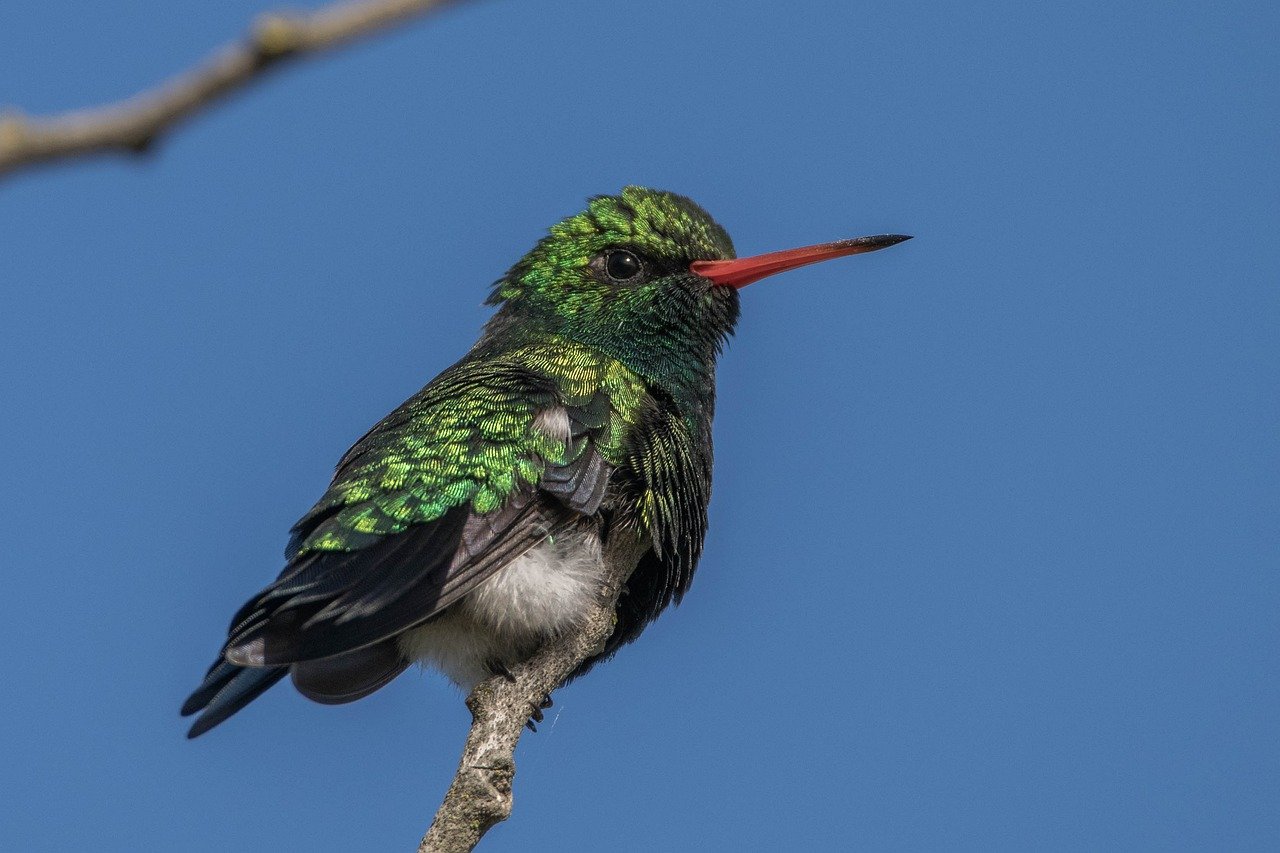
Choosing the Right Plants
When it comes to attracting hummingbirds to your garden, the right plants are absolutely crucial. These delightful little creatures are drawn to bright colors and sweet nectar, so selecting the right flowering plants can transform your outdoor space into a hummingbird haven. Native plants are particularly effective because they are well-adapted to the local environment and provide the best nectar sources. Think of your garden as an inviting restaurant for these feathered guests; the more appealing your menu, the more likely they are to stop by!
Some of the best plants to consider include bee balm, salvia, columbine, and trumpet vine. These plants not only produce abundant nectar but also bloom at various times throughout the season, ensuring a steady food supply. For instance, bee balm is known for its vibrant red and pink flowers, while salvia offers a range of colors from blue to purple. The diversity in your plant selection can be likened to a colorful buffet that keeps hummingbirds returning for more.
Here’s a quick overview of some top plants that attract hummingbirds:
| Plant Name | Color | Bloom Time |
|---|---|---|
| Bee Balm | Red, Pink, Purple | Summer |
| Salvia | Blue, Purple | Spring to Fall |
| Columbine | Red, Yellow, Blue | Spring |
| Trumpet Vine | Orange, Red | Summer |
In addition to flowering plants, consider incorporating perennials and annuals into your garden. Perennials like hummingbird sage and monarda return year after year, while annuals such as petunias and geraniums can provide bursts of color and nectar during the growing season. It's a good idea to plant in clusters, as hummingbirds are more likely to notice large swaths of color than isolated blooms.
Also, remember to avoid using pesticides in your garden. These chemicals can be harmful not only to hummingbirds but also to other beneficial insects. Think of your garden as a sanctuary where all creatures can thrive together. By choosing the right plants and maintaining an organic approach, you’ll create a flourishing environment that attracts hummingbirds and other wildlife.
In conclusion, selecting the right plants is an essential step in your quest to attract hummingbirds. By focusing on native, nectar-rich flowers and creating a vibrant, welcoming habitat, you’ll be well on your way to enjoying the beauty and joy that these enchanting birds bring to your garden.
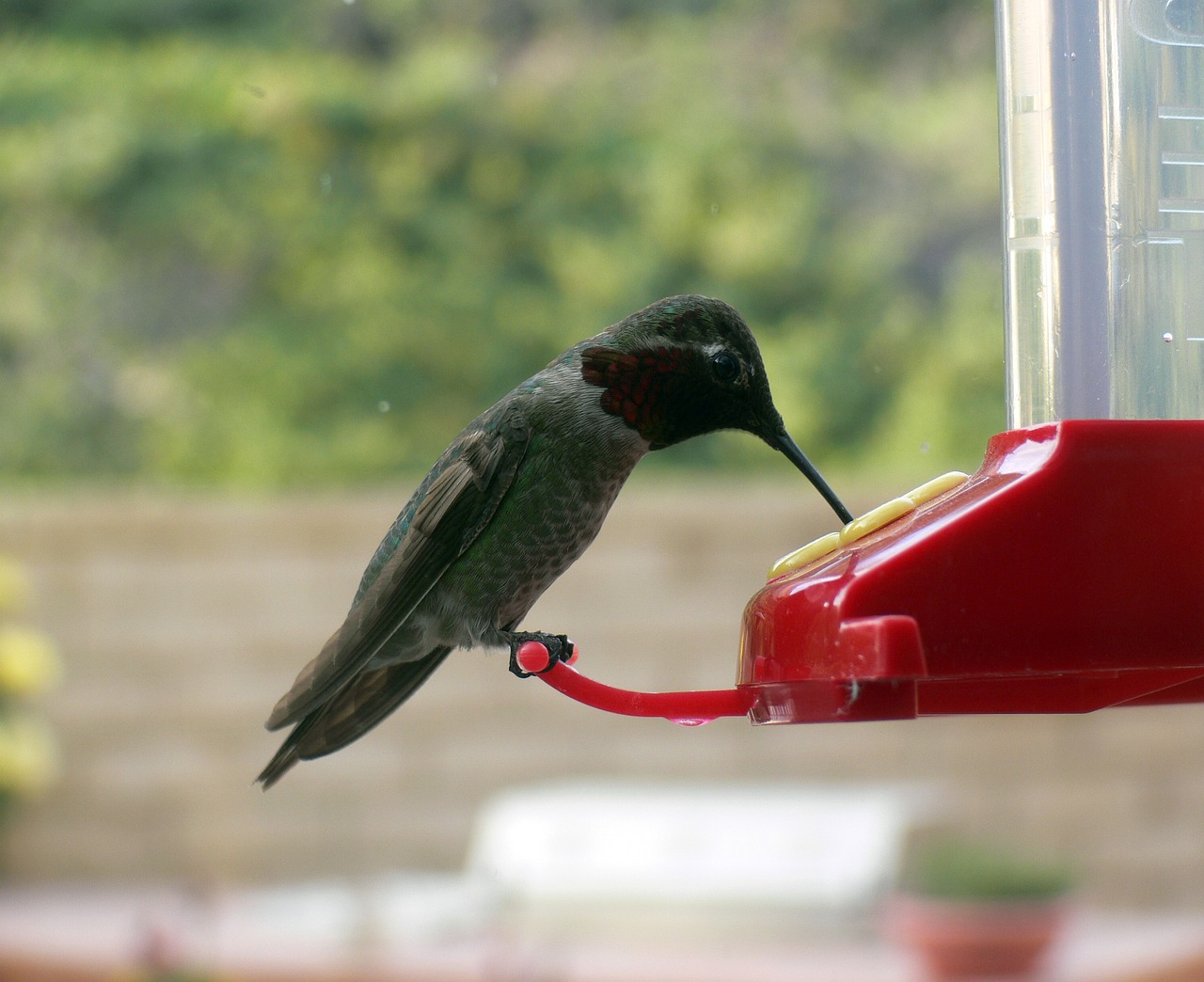
Setting Up Hummingbird Feeders
Setting up hummingbird feeders is an essential step in attracting these beautiful and vibrant birds to your garden. Not only do feeders provide a reliable source of food, but they also create a delightful spectacle as hummingbirds flit about, showcasing their stunning colors and agile movements. To maximize the effectiveness of your feeders, it’s important to consider their placement, type, and maintenance.
First and foremost, you’ll want to choose the right type of feeder. There are various designs available, each catering to different species of hummingbirds. For instance, some feeders have multiple feeding ports, making them ideal for attracting several birds at once, while others might be designed for specific species. When selecting a feeder, consider the following:
- Size: Larger feeders hold more nectar, reducing the frequency of refills.
- Material: Glass feeders are often more durable and easier to clean than plastic ones.
- Port design: Look for feeders with bee guards to keep unwanted insects away.
Once you’ve selected your feeder, the next step is to prepare the nectar. A simple recipe involves mixing one part granulated sugar with four parts water. Boil the mixture for a few minutes to ensure the sugar dissolves completely, then allow it to cool before filling your feeder. It’s important to avoid using red dye or other additives, as these can be harmful to the birds. Instead, opt for natural nectar that mimics the flowers they love.
After preparing your nectar, it’s time to think about where to place your feeder. The location is crucial for attracting hummingbirds. Here are some tips to enhance visibility:
- Position the feeder in a sunny spot to warm the nectar and make it more appealing.
- Hang the feeder near colorful flowers that also attract hummingbirds.
- Ensure that the feeder is visible from a distance, as hummingbirds are curious creatures.
Additionally, consider placing your feeder in a sheltered area to protect the birds from harsh weather and predators. A location near trees or shrubs can provide a safe haven for these delicate birds as they approach the feeder.
Maintenance is another critical aspect of keeping your hummingbird feeders inviting. Regular cleaning is essential to prevent mold and bacteria from developing in the nectar. Aim to clean your feeders every few days, especially during hot weather. Use a mixture of hot water and vinegar or a mild soap to scrub the feeder thoroughly, and rinse it well before refilling with fresh nectar.
In summary, setting up hummingbird feeders involves careful selection, proper nectar preparation, strategic placement, and consistent maintenance. By following these guidelines, you’ll create an inviting atmosphere that not only attracts hummingbirds but also enhances the beauty of your garden. Watching these enchanting creatures as they dart around your feeders can be a truly magical experience!
How often should I change the nectar in my hummingbird feeder?
It's best to change the nectar every 3-5 days, especially in hot weather, to prevent fermentation and mold growth.
Can I use honey instead of sugar for hummingbird nectar?
No, honey can be harmful to hummingbirds. Stick to granulated sugar mixed with water for the best results.
What time of year should I put out my hummingbird feeders?
It's recommended to put out your feeders in early spring as hummingbirds return from migration, typically around March or April, depending on your location.
How can I keep bees and wasps away from my hummingbird feeders?
Using feeders with bee guards and placing them in sunny areas can help deter bees and wasps. Additionally, keeping the area around the feeder clean can reduce the attraction of insects.
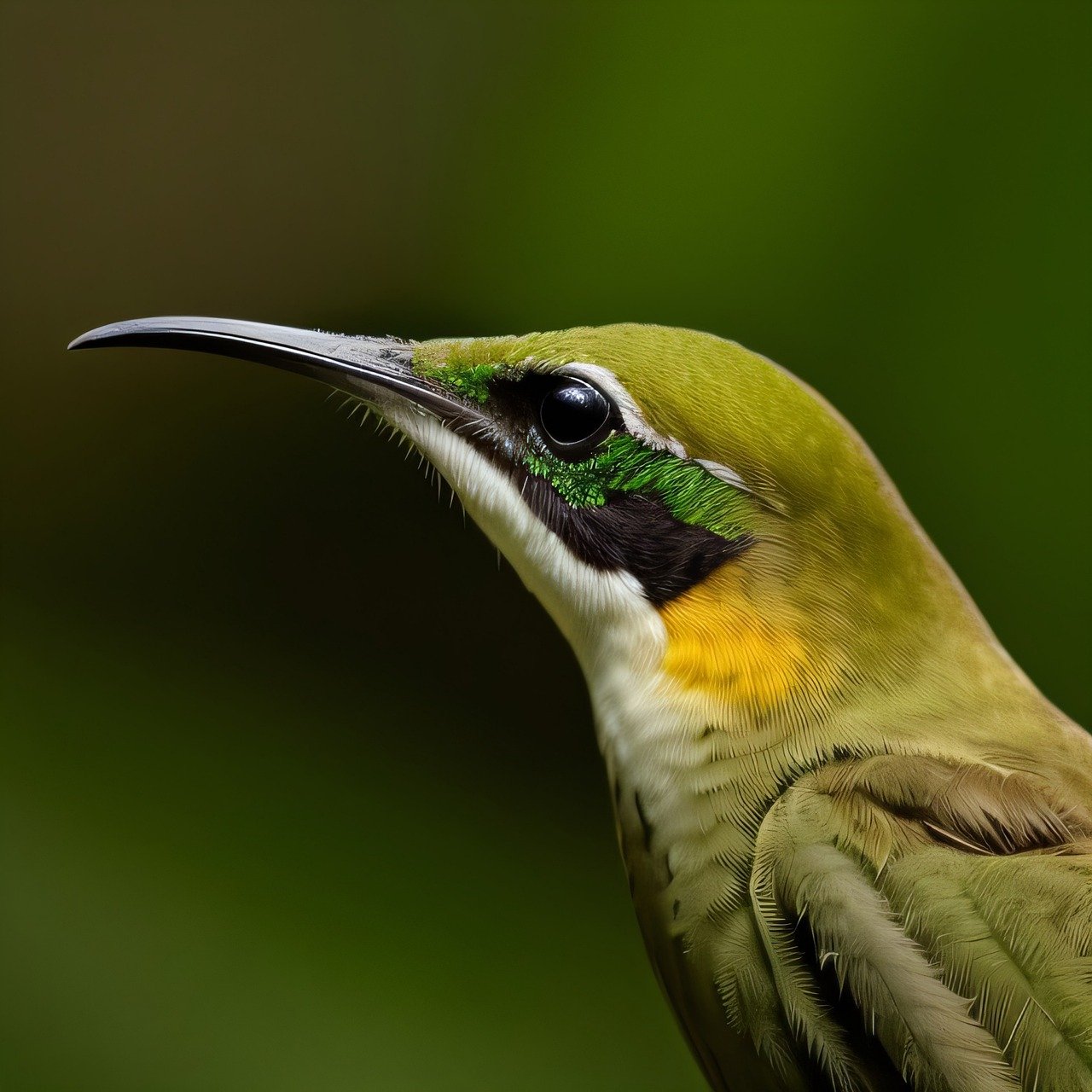
Types of Feeders
When it comes to attracting our feathered friends, the type of feeder you choose can make a world of difference. Hummingbird feeders come in various designs, each catering to different species and preferences. Understanding these options is essential for maximizing your garden's appeal. So, let’s dive into the different types of feeders available and their unique features!
One popular option is the drip feeder. These feeders are designed to dispense nectar slowly, creating a steady flow that hummingbirds find irresistible. They often come with multiple feeding ports, allowing several birds to dine simultaneously. The downside? If not maintained properly, they can become messy and attract unwanted pests.
Another excellent choice is the window feeder. These feeders can be attached directly to your window, providing a front-row seat to the action. They are especially appealing for those who want to enjoy birdwatching from the comfort of their home. However, they may limit the number of birds that can feed at once due to their smaller size.
If you're looking for something more decorative, consider a decorative feeder. These feeders come in various shapes and designs, often resembling flowers or other natural elements. While they can be visually stunning, ensure they are functional and easy to clean. Remember, a beautiful feeder is only as good as its ability to attract birds!
Now, let’s not forget about the hummingbird feeder with built-in ant moats. These feeders have a small reservoir filled with water that prevents ants from reaching the nectar. This feature can be a game-changer, as ants can quickly ruin your hummingbird feeding experience. Similarly, bee guards can be added to feeders to keep pesky bees at bay, ensuring that only hummingbirds enjoy the sweet nectar.
In summary, the choice of feeder can significantly influence your success in attracting hummingbirds. Here’s a quick comparison of the different types:
| Feeder Type | Pros | Cons |
|---|---|---|
| Drip Feeder | Steady nectar flow, multiple ports | Can become messy |
| Window Feeder | Close-up viewing, easy access | Limited feeding space |
| Decorative Feeder | Visually appealing | May not be functional |
| Feeder with Ant Moats | Prevents ants from accessing nectar | Requires regular water refills |
Choosing the right feeder is just one part of the equation. The placement and maintenance of these feeders are equally crucial for attracting hummingbirds to your garden. So, keep your feeders clean, filled with fresh nectar, and positioned strategically to enjoy the delightful sight of these tiny, vibrant birds flitting about!
- How often should I clean my hummingbird feeder? It's best to clean your feeder every few days, especially in hot weather, to prevent mold and fermentation.
- What is the best nectar recipe for hummingbirds? A simple mixture of four parts water to one part white granulated sugar is ideal. Avoid using red dye!
- Can I use honey instead of sugar? No, honey can ferment and harm the birds. Stick to sugar water for their safety.
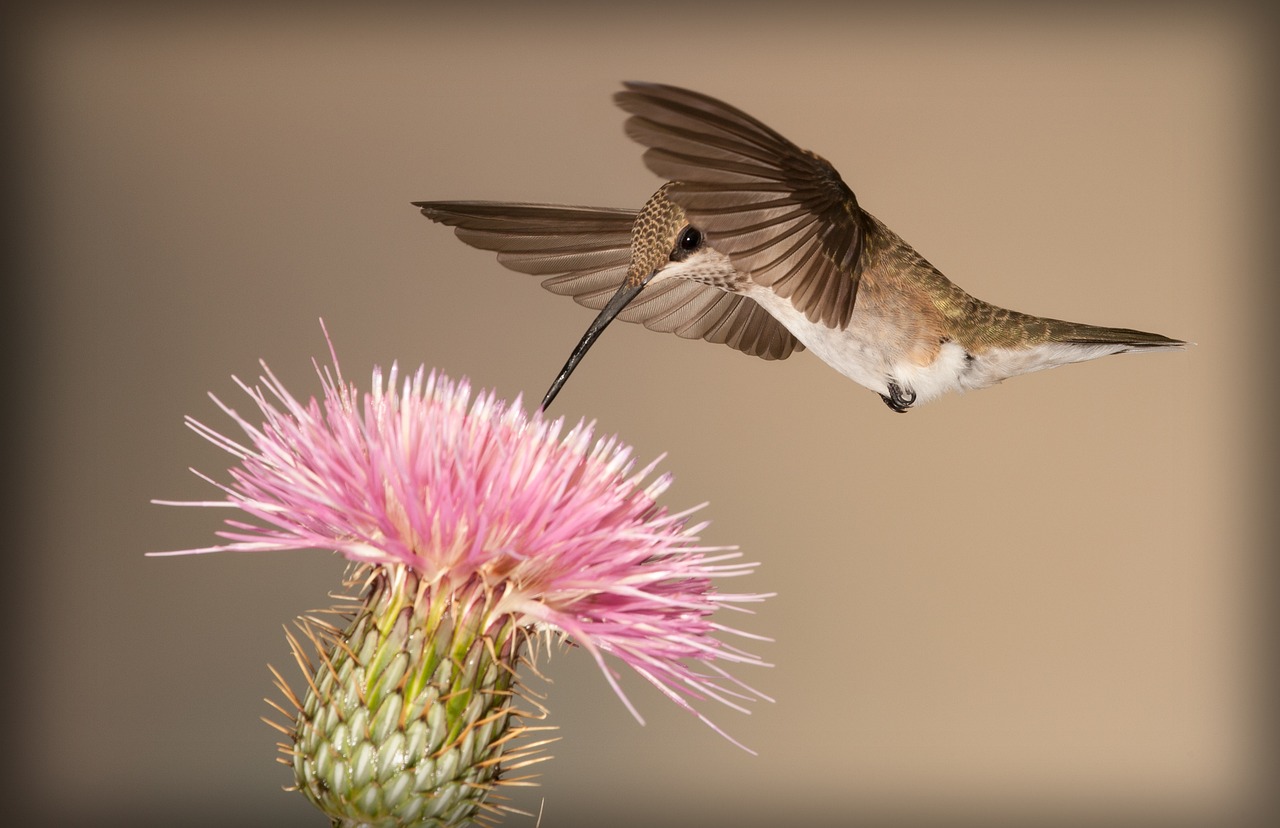
Glass vs. Plastic Feeders
When it comes to choosing the perfect hummingbird feeder, the debate between glass and plastic feeders often takes center stage. Each type has its own set of advantages and disadvantages, and understanding these can help you make an informed decision that best suits your garden and the feathered friends you wish to attract.
Glass feeders are often praised for their durability and aesthetic appeal. They come in a variety of beautiful designs and colors, making them a charming addition to your garden decor. The smooth surface of glass is easier to clean, which is crucial for maintaining a healthy feeding environment for hummingbirds. Moreover, glass feeders tend to be heavier, making them less susceptible to being blown away by strong winds. However, they can also be more expensive and may break if dropped.
On the other hand, plastic feeders are typically lighter and more affordable, making them a popular choice for many gardeners. They are often designed with bright colors that can attract hummingbirds effectively. However, plastic can degrade over time when exposed to sunlight, leading to discoloration and potential leakage. While they may not last as long as glass feeders, many plastic options are designed to be easy to clean and refill, which is a significant advantage for busy gardeners.
| Feature | Glass Feeders | Plastic Feeders |
|---|---|---|
| Durability | High | Moderate |
| Aesthetic Appeal | High | Moderate |
| Weight | Heavy | Light |
| Ease of Cleaning | Easy | Easy |
| Price | Higher | Lower |
Ultimately, the choice between glass and plastic feeders will depend on your personal preference and circumstances. If you value aesthetics and durability, a glass feeder might be the way to go. However, if you are looking for something budget-friendly and lightweight, a plastic feeder could serve you just as well. Whichever you choose, remember that regular cleaning and maintenance are key to keeping your feeders inviting for hummingbirds.
- How often should I clean my hummingbird feeder? It is recommended to clean your feeder every 3 to 5 days, especially during hot weather, to prevent mold and fermentation.
- Can I use store-bought nectar? Yes, but it's often best to use a homemade solution of 1 part sugar to 4 parts water, boiled and cooled, as it is healthier for the birds.
- What should I do if I notice bees or ants around my feeder? Consider using feeder accessories like ant moats and bee guards to deter these pests while ensuring hummingbirds can still access the nectar.
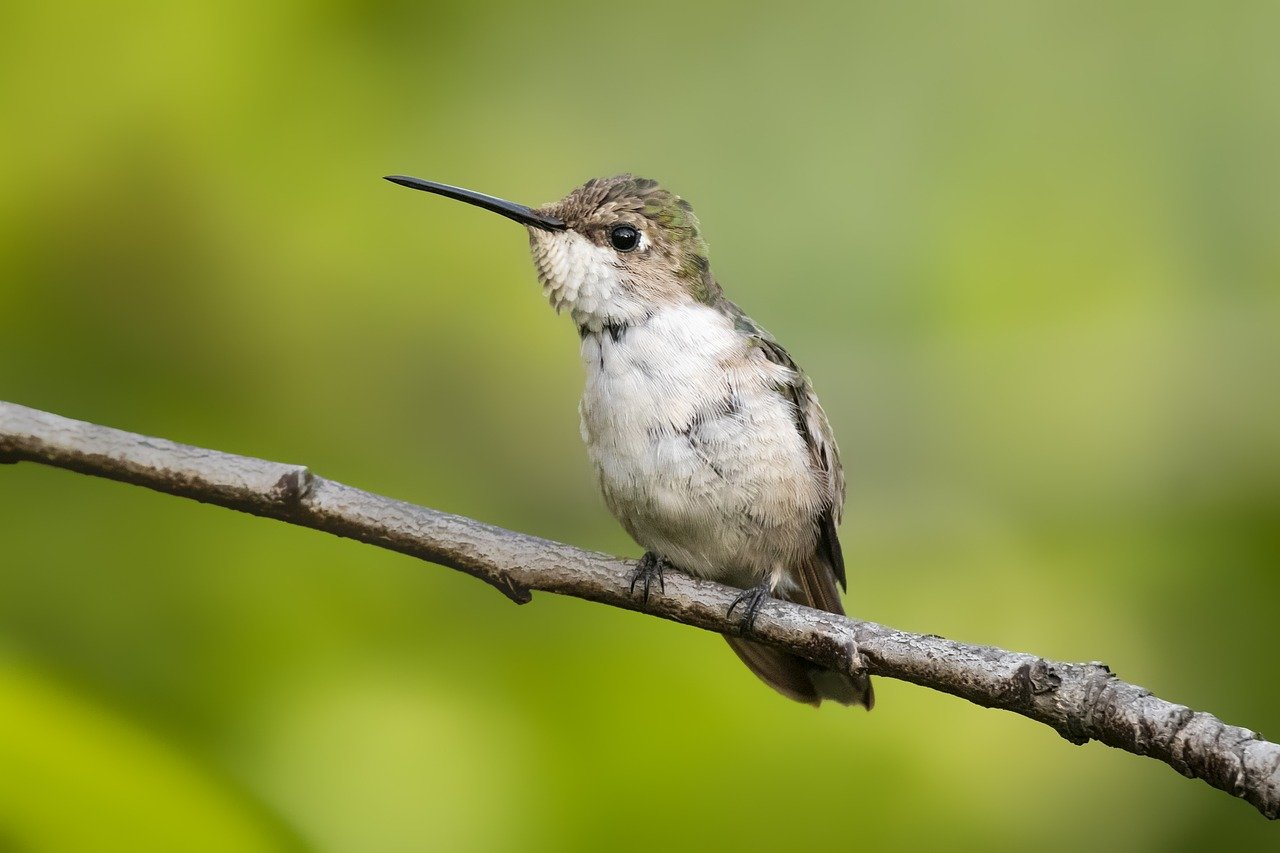
Feeder Accessories
When it comes to attracting hummingbirds, having a feeder is just the beginning. To truly create a hummingbird haven, consider incorporating various that enhance functionality and ensure a delightful experience for both you and the birds. Accessories like ant moats and bee guards play crucial roles in keeping your feeders clean and accessible. These additions not only increase the longevity of your feeder but also make it more inviting for your feathered friends.
One of the most effective accessories is the ant moat. This small, often decorative, container sits above the feeder and is filled with water. The idea is simple: ants, which can be a nuisance at feeders, are unable to swim, so they won't be able to reach the nectar. This means your feeder remains uncontaminated and more appealing to hummingbirds. Additionally, many ant moats come in various designs, allowing you to choose one that complements your garden aesthetics.
Another essential accessory is the bee guard. While bees are important pollinators, they can sometimes overwhelm hummingbird feeders, making it difficult for the birds to access the nectar. Bee guards are typically made of fine mesh or plastic and fit over the feeding ports. They allow hummingbirds to sip nectar freely while keeping bees at bay. However, it's essential to choose a bee guard that doesn’t hinder the birds’ access to the nectar, as you want to ensure that your feeders remain a welcoming oasis for these tiny avians.
Moreover, consider adding a cleaning brush to your feeding supplies. Regular cleaning is vital to prevent mold and bacteria growth, which can be harmful to hummingbirds. A cleaning brush with a long handle can help you reach all the nooks and crannies of your feeder, ensuring that it stays hygienic. This proactive approach not only benefits the birds but also extends the life of your feeder.
Lastly, don't overlook the significance of nectar guards. These are small, often colored attachments that fit into the feeding ports, designed to prevent nectar from spilling and attracting unwanted pests. They also help maintain a steady flow of nectar, ensuring that your feeder is always ready for hungry hummingbirds. By investing in these simple yet effective accessories, you can create a hummingbird-friendly environment that keeps these beautiful creatures returning to your garden.
- How often should I clean my hummingbird feeders? It's best to clean your feeders every 3 to 5 days, especially in hot weather, to prevent mold and bacteria from forming.
- What type of nectar should I use? A simple mix of four parts water to one part white granulated sugar is ideal. Avoid using red dye or honey, as they can be harmful to hummingbirds.
- Can I use store-bought nectar? Yes, but ensure it is specifically formulated for hummingbirds without added dyes or preservatives.
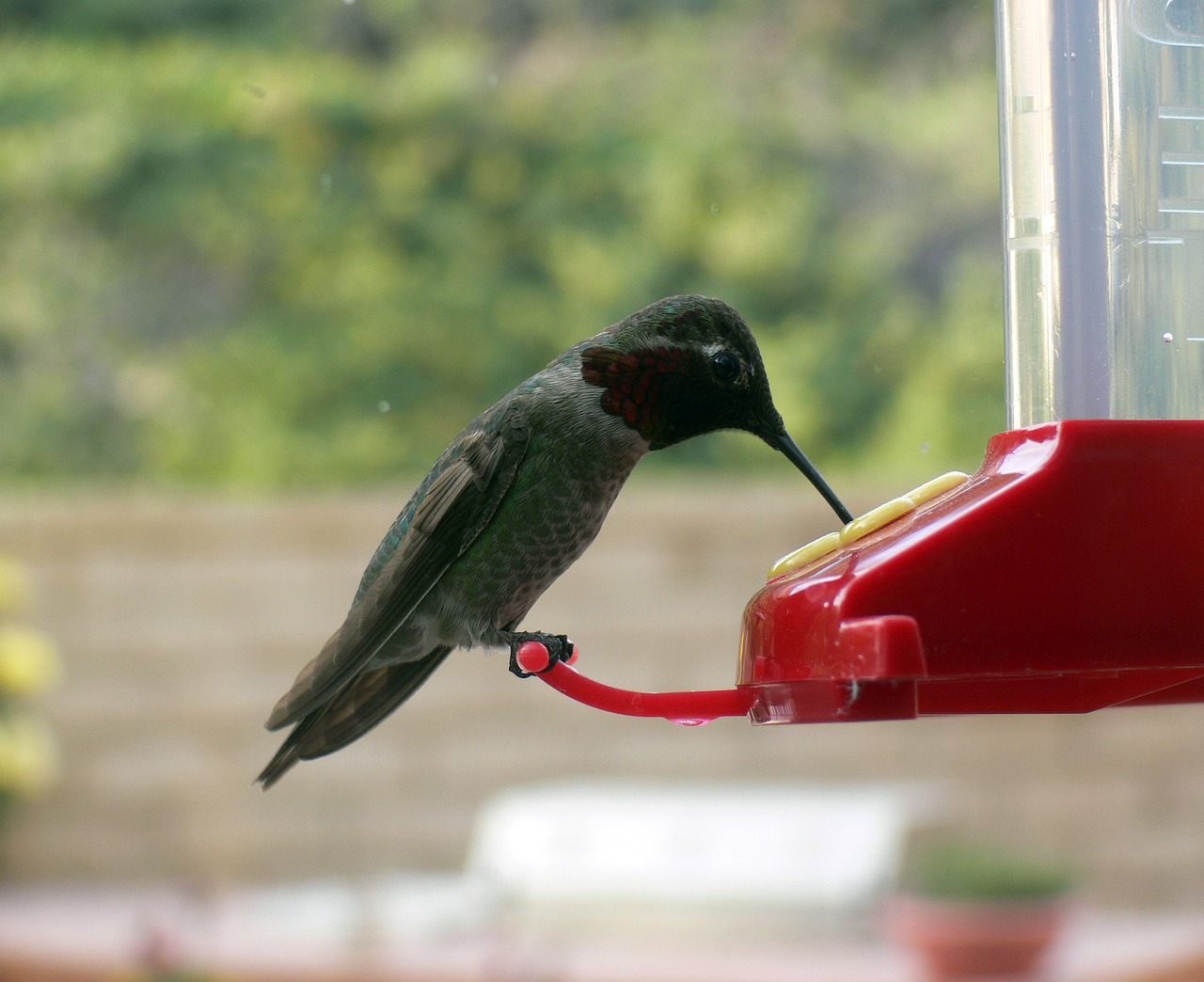
Feeder Placement
When it comes to attracting hummingbirds, the placement of your feeders can make all the difference. Imagine your garden as a bustling café, and the feeders are the enticing menu items that draw in your feathered guests. To maximize the visibility and accessibility of your feeders, consider these essential tips:
First and foremost, location is key. Hummingbirds are naturally curious creatures, and they prefer to feed in areas where they feel safe and secure. Placing your feeders in a spot that's easily visible from inside your home allows you to enjoy the delightful sight of these tiny birds flitting about. Aim for a location that offers a clear view of the feeder, ideally near flowering plants that also attract hummingbirds. This way, they can easily spot the feeder while enjoying the natural beauty of your garden.
Additionally, consider the height of your feeders. Installing them at eye level or slightly above can create a more inviting atmosphere. Hummingbirds often prefer to feed in open areas, so avoid placing feeders too close to dense shrubs or trees where predators might lurk. A distance of about 10 to 15 feet from protective cover is generally ideal. This distance provides a safe space for the birds to approach the feeder while keeping them out of harm's way.
Another important factor to consider is the amount of sunlight your feeders receive. Hummingbirds are attracted to bright colors, but too much direct sunlight can cause the nectar to spoil quickly. Ideally, you want to find a balance by placing the feeder in a spot that gets morning sun and afternoon shade. This will help keep the nectar fresh and appealing, ensuring that your feathered friends keep coming back for more.
Lastly, keep your feeders clean and well-maintained. Regularly check the nectar levels and clean the feeders at least once a week, especially during hot weather. A dirty feeder can deter hummingbirds, causing them to look elsewhere for food. By ensuring your feeders are in prime condition and located in a strategic spot, you create an inviting oasis that will keep these beautiful birds returning to your garden.
In summary, effective feeder placement is about creating a safe, visible, and appealing environment for hummingbirds. By considering factors such as location, height, sunlight exposure, and cleanliness, you can transform your garden into a hummingbird haven that will delight both you and your avian visitors.
- How often should I change the nectar in my feeders? It's best to change the nectar every 3-5 days, and more frequently in hot weather.
- What type of nectar should I use? A simple mixture of four parts water to one part white granulated sugar is ideal. Avoid using red dye.
- Can I use honey or artificial sweeteners in my nectar? No, honey can promote mold growth and artificial sweeteners are not suitable for hummingbirds.
- What colors attract hummingbirds? Bright colors like red, orange, and pink are particularly appealing to hummingbirds.
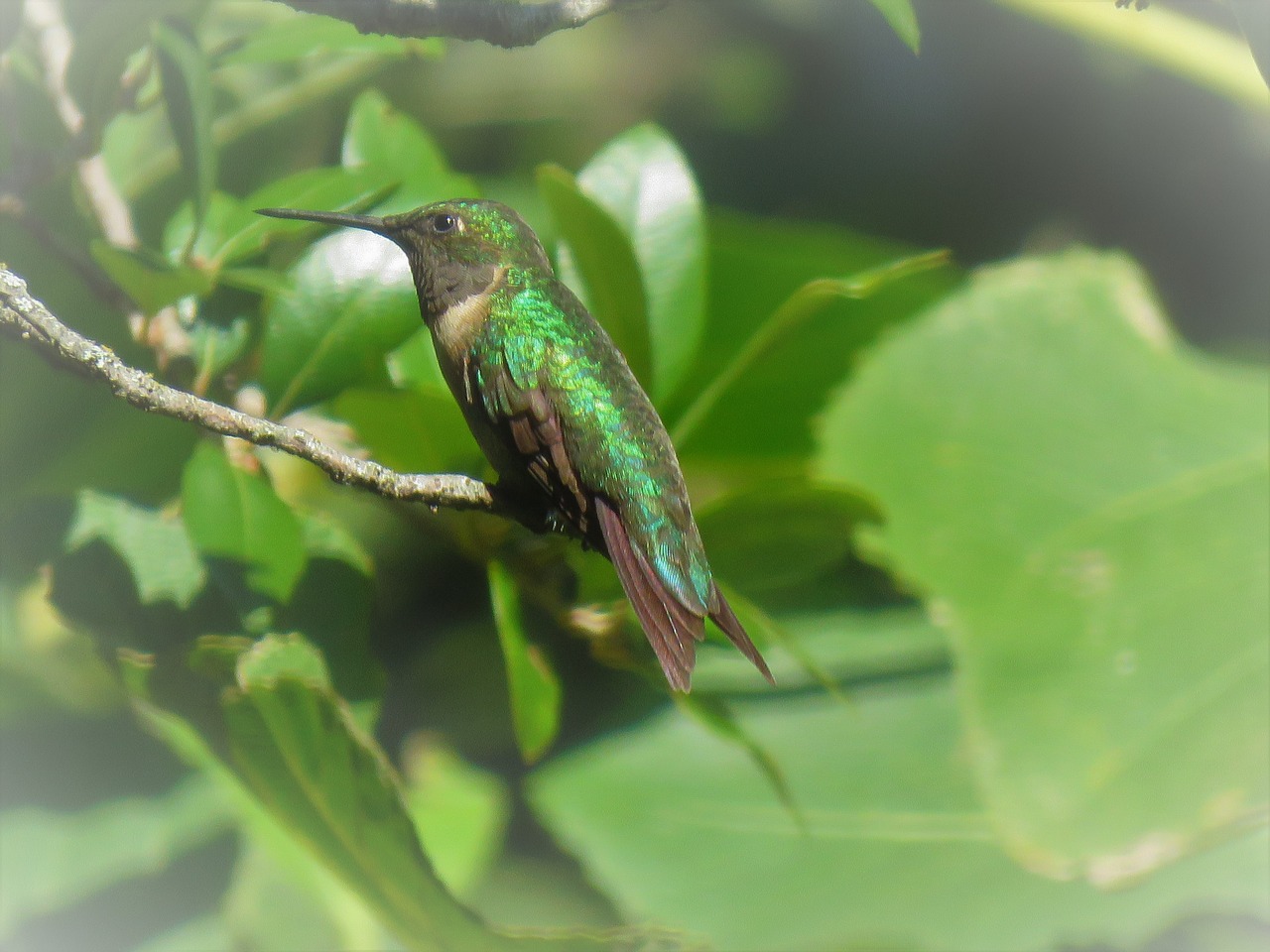
Creating a Suitable Habitat
Creating a welcoming habitat for hummingbirds is essential if you want to attract these delightful creatures into your garden. Hummingbirds are not just drawn to nectar-rich flowers and feeders; they also seek out environments that provide shelter, safety, and nesting opportunities. Think of your garden as a miniature ecosystem where every element plays a role in attracting these vibrant visitors. So, how do you create such a habitat? Let's dive in!
First and foremost, consider adding a variety of native plants that offer both nectar and shelter. Native species are adapted to your local climate and soil, making them easier to maintain while also providing the best resources for local wildlife. Some excellent choices include:
- Bee Balm - This plant not only attracts hummingbirds but also bees and butterflies.
- Columbine - With its unique shape, this flower is a favorite among hummingbirds.
- Salvia - Known for its vibrant colors, salvia is a nectar powerhouse.
By incorporating a variety of these plants, you can create a visually appealing garden that serves as a nectar buffet for hummingbirds.
Next, let’s talk about the importance of water sources. Hummingbirds need water for drinking and bathing, so providing a reliable source can enhance your garden's appeal. Consider adding a shallow dish filled with fresh water or a mister that creates a fine spray. Not only does this provide hydration, but it also offers a refreshing spot for these birds to cool off on hot days. Remember, a clean water source is vital, so change the water regularly to prevent stagnation and algae growth.
When it comes to nesting, hummingbirds prefer safe and sheltered areas. They often seek out shrubs and trees that provide cover from predators and harsh weather. Planting dense shrubs or small trees can create ideal nesting spots. Some excellent choices for nesting include:
- Hawthorn - Offers dense foliage and berries for added food sources.
- Dogwood - Provides excellent cover and is visually appealing.
- Red-twig Dogwood - Its bright stems add winter interest while offering shelter.
By ensuring that your garden includes these elements, you can create a safe haven for hummingbirds. They will feel more secure and are likely to return season after season.
Lastly, consider the layout of your garden. A well-planned garden with a mix of heights, colors, and textures can mimic a natural habitat. Incorporating layers of plants, from tall flowers to ground covers, can create a more inviting space. This diversity not only attracts hummingbirds but also enhances the overall beauty of your garden.
Q1: How can I tell if hummingbirds are visiting my garden?
A1: Look for signs like hovering around flowers, frequent visits to feeders, and their distinctive chirping sounds. You may also notice their colorful feathers flashing as they dart about.
Q2: What time of year should I start attracting hummingbirds?
A2: It's best to start preparing your garden in early spring, just before the hummingbirds return from migration. This way, you'll have plenty of food sources ready for them.
Q3: How can I keep my feeders clean?
A3: Clean your feeders every few days, especially in hot weather. Use a mixture of hot water and vinegar to scrub away any residue or mold.
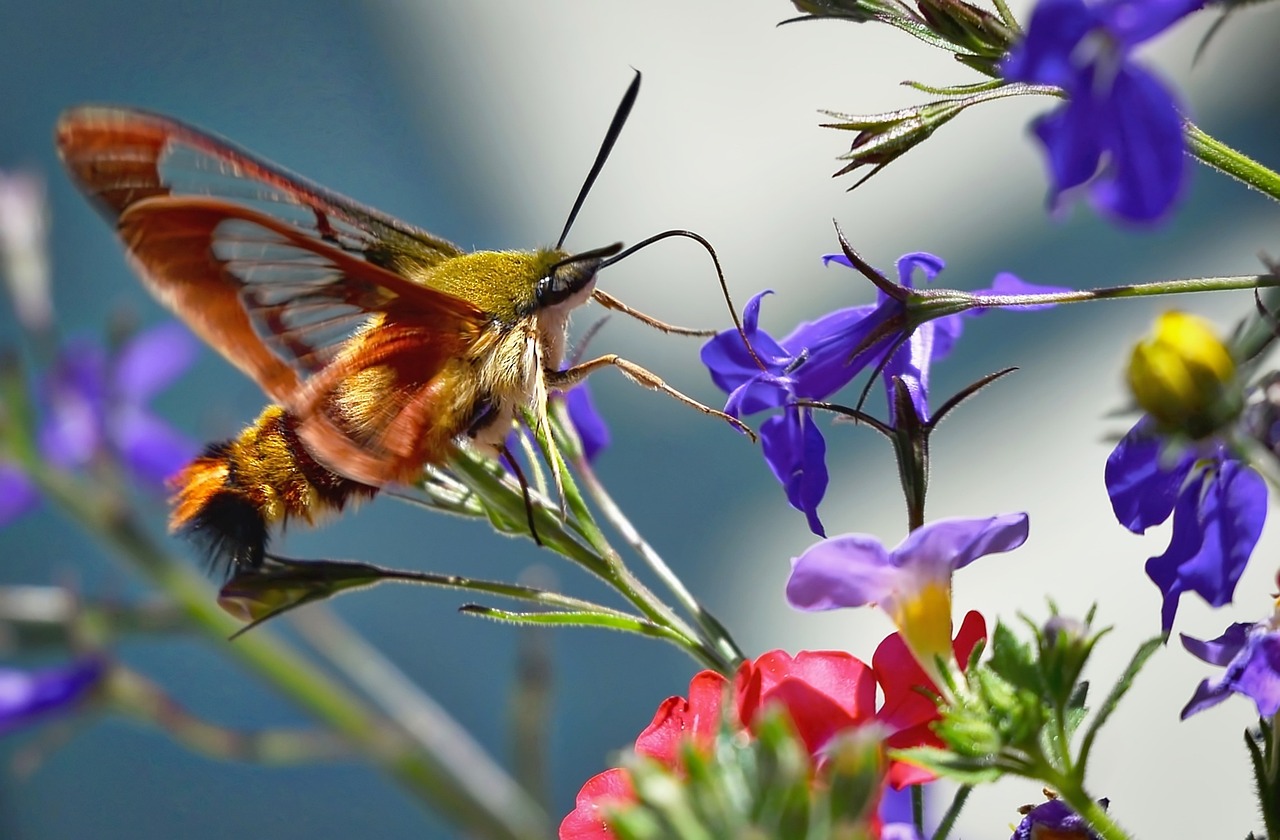
Water Sources
When it comes to attracting hummingbirds, providing a reliable water source can be just as important as having the right plants and feeders. These tiny birds not only rely on nectar for energy but also need water to stay hydrated and maintain their vibrant plumage. Imagine your garden as a bustling oasis, where hummingbirds can stop by for a refreshing drink while flitting from flower to flower. So, how can you create this inviting environment?
One effective way to attract hummingbirds is by incorporating shallow dishes filled with fresh water. These dishes should be placed in a sunny spot, as hummingbirds are more likely to visit areas that are warm and well-lit. You can use decorative birdbaths, small saucers, or even repurposed containers. Just make sure the water is shallow—about an inch or two deep—so that the birds can easily access it without the risk of drowning.
Another fantastic option is to install a mister or a fine spray of water. Hummingbirds are naturally drawn to moving water, and the sound of a gentle mist can entice them to your garden. You can create a simple misting system using a garden hose with a spray attachment or purchase a decorative mister designed specifically for attracting birds. The shimmering droplets will not only provide hydration but also create a beautiful spectacle in your garden.
When setting up your water sources, consider the following tips:
- Keep it Clean: Regularly change the water to prevent stagnation and algae growth. Hummingbirds are attracted to clean water sources, so aim to refresh the water every few days.
- Location Matters: Place your water features near nectar-producing plants or feeders. This proximity will encourage hummingbirds to visit your garden more frequently.
- Safety First: Ensure that the area around the water source is free from predators, such as cats or other animals that might pose a threat to the birds.
By providing these water sources, you’ll not only enhance your garden's appeal but also create a thriving habitat for hummingbirds. Just picture it: colorful birds darting through the air, stopping to sip water from your carefully placed dishes or enjoying a refreshing mist. It’s a delightful scene that can transform your outdoor space into a vibrant sanctuary for these enchanting creatures.
Q: How often should I change the water in my hummingbird dishes?
A: It's best to change the water every few days, especially in warm weather, to prevent stagnation and algae growth.
Q: Can I use a regular birdbath for hummingbirds?
A: Yes, but ensure that the water is shallow enough for hummingbirds to access safely. You may need to add rocks or pebbles to create a shallow area.
Q: Will hummingbirds use a mister?
A: Absolutely! Hummingbirds are attracted to moving water, and a mister can be a great way to draw them into your garden.
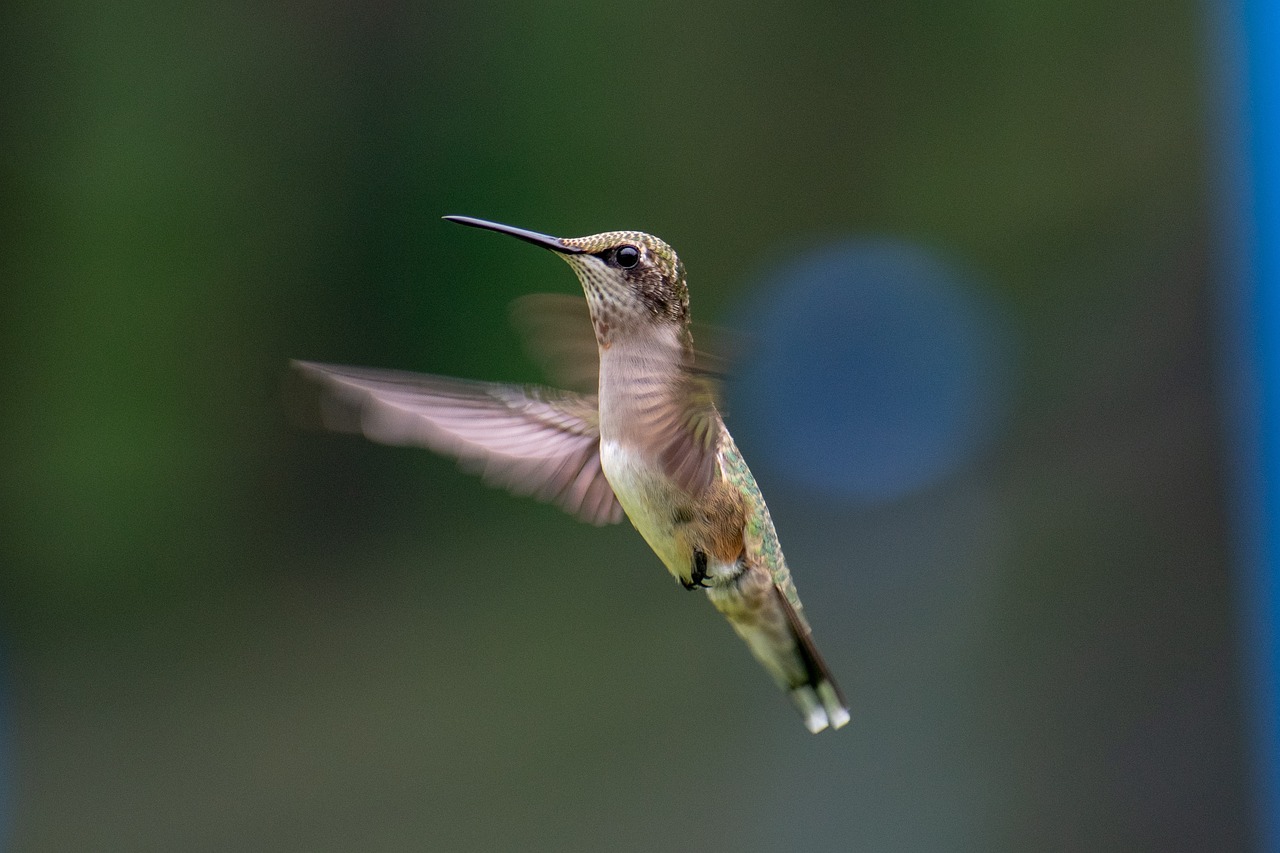
Safe Nesting Areas
Creating safe nesting areas is essential for attracting breeding hummingbirds to your garden. These tiny birds are not only drawn to nectar-rich flowers and feeders but also require secure spots to build their nests and raise their young. When planning your garden, consider incorporating specific shrubs and trees that provide the necessary shelter and protection from predators.
Hummingbirds prefer to nest in dense foliage where they can hide from larger birds and other potential threats. Some of the best plants to include in your garden for this purpose are:
- Native Shrubs: Plants like viburnum, elderberry, and serviceberry are excellent choices. They offer dense cover and attract insects, which are a food source for hummingbird chicks.
- Deciduous Trees: Trees such as maple and willow provide a sturdy structure for nesting and ample protection.
- Ornamental Grasses: Tall grasses can create a natural barrier and nesting material, making them a great addition to your garden.
When selecting plants, aim for a mix of heights and types. This diversity not only creates a more visually appealing garden but also increases the chances of attracting hummingbirds by providing a variety of nesting options. Additionally, consider planting in clusters, as hummingbirds are more likely to feel secure when they can flit between multiple plants.
Moreover, it's crucial to maintain these areas by avoiding the use of pesticides and herbicides that could harm the birds or their food sources. Instead, opt for natural pest control methods to keep your garden healthy and safe for your feathered friends. By fostering an environment that prioritizes safety and accessibility, you'll not only attract hummingbirds but also support their life cycle, allowing them to thrive in your garden.
Q: How can I tell if hummingbirds are nesting in my garden?
A: Look for small, cup-shaped nests typically made from plant materials and spider silk. They are often hidden in dense foliage, making them difficult to spot.
Q: What should I do if I find a hummingbird nest?
A: It's best to observe from a distance and avoid disturbing the nest. Hummingbirds are sensitive to disturbances, and too much human interaction can cause them to abandon their nesting site.
Q: Can I provide nesting material for hummingbirds?
A: Yes! You can help by leaving natural materials like feathers, cotton, or small twigs in your garden. However, avoid synthetic materials, as they can be harmful to the birds.
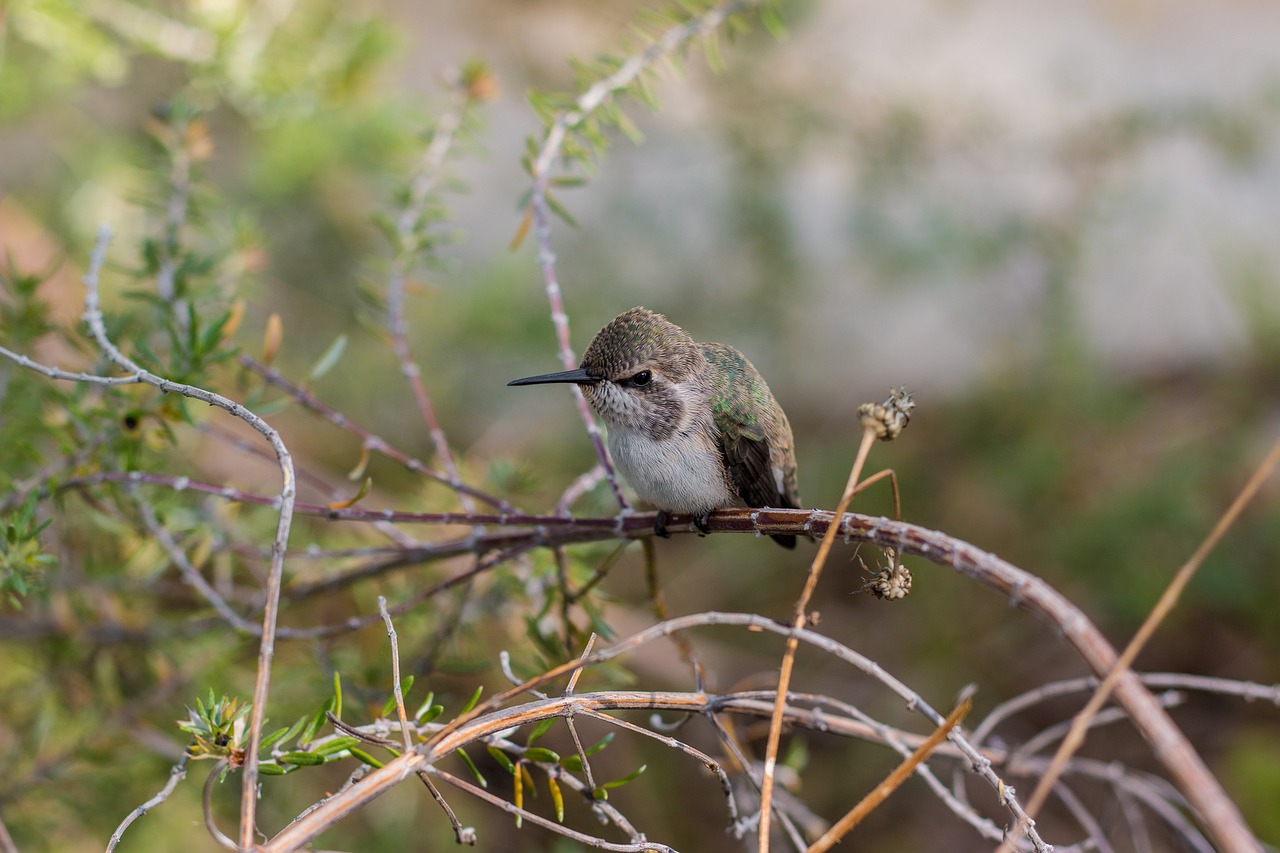
Seasonal Considerations
Understanding the seasonal behaviors and migration patterns of hummingbirds can significantly enhance your garden's appeal. These tiny, vibrant birds are not just a delight to watch; they also play a crucial role in pollination. By aligning your gardening practices with their seasonal needs, you can create a welcoming environment that attracts them throughout the year.
As winter fades and spring approaches, many species of hummingbirds begin their migration back to their breeding grounds. This is the perfect time to prepare your garden. Start by planting nectar-rich flowers that bloom in early spring, such as columbine and salvia. Not only will these plants provide essential food sources for the returning birds, but they will also add a burst of color to your garden. Additionally, setting up your feeders early can ensure that the birds have a reliable food source as they arrive. Remember, timing is everything!
During the summer months, hummingbirds are in full swing, and your garden should be a vibrant haven for them. Regularly check your feeders to ensure they are clean and filled with fresh nectar. Consider incorporating a variety of plants that bloom at different times to provide a continuous supply of food. This diversity not only attracts more hummingbirds but also enhances the overall beauty of your garden.
As the leaves begin to change and fall arrives, many gardeners overlook the importance of maintaining a hummingbird-friendly environment. However, this is a crucial time for migrating birds. They need to fuel up before their long journey south. Keep your feeders stocked and continue to care for your late-blooming plants. Flowers like asters and sedum can provide essential nectar during this time. Additionally, consider leaving some of your plants standing through the winter; they can offer shelter and food for birds that may linger in your area.
To summarize, here are some key seasonal considerations for attracting hummingbirds:
- Spring: Plant early-blooming flowers and set up feeders.
- Summer: Maintain feeders and diversify your plantings for continuous nectar sources.
- Fall: Keep feeders stocked and care for late-blooming plants.
- Winter: Leave some plants standing for shelter and food; adjust feeding strategies as needed.
By paying attention to these seasonal considerations, you can create a thriving garden that not only attracts hummingbirds but also brings joy to your outdoor space. Remember, the more you cater to their needs throughout the year, the more likely they will return to your garden, creating a lively and colorful atmosphere.
Q: When should I put out my hummingbird feeders?
A: It's best to put out your feeders in early spring, just before the hummingbirds start their migration back to your area.
Q: How often should I change the nectar in my feeders?
A: Change the nectar every 2-3 days, especially in hot weather, to prevent fermentation and mold growth.
Q: Can I use red dye in my nectar?
A: No, avoid using red dye as it can be harmful to hummingbirds. Instead, use natural nectar made from four parts water to one part sugar.
Q: What plants are best for attracting hummingbirds?
A: Some excellent choices include trumpet vine, bee balm, and salvia. Native plants are particularly effective.
Q: How can I provide water for hummingbirds?
A: Shallow dishes or misters can attract hummingbirds. Just ensure that the water is clean and refreshed regularly.
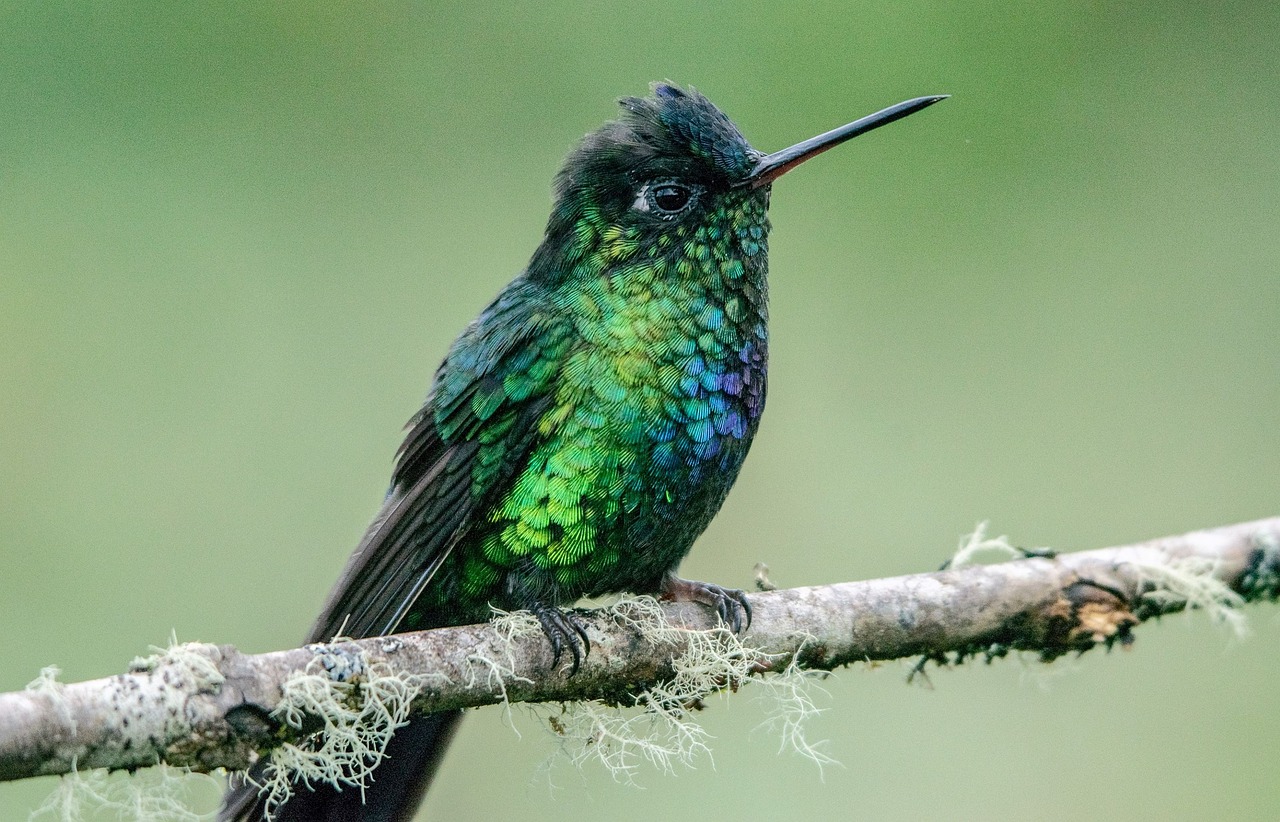
Spring Preparation
As the chill of winter fades away and the first signs of spring emerge, it's time to prepare your garden for the delightful return of hummingbirds. These tiny, vibrant creatures are not just a joy to watch; they play a vital role in pollination, making them essential for a thriving garden ecosystem. So, what can you do to ensure your garden is ready to welcome these feathered friends back home?
First and foremost, timing is everything. Hummingbirds typically return to North America around mid to late March, depending on the region. To catch their attention right when they arrive, you should start your preparations early. This means cleaning and refilling your hummingbird feeders with fresh nectar as soon as the temperatures begin to rise. A simple recipe for hummingbird nectar is to mix one part white granulated sugar with four parts water, bringing it to a boil and letting it cool before filling your feeders. Remember, no food coloring is necessary!
Next, consider planting early-blooming flowers that provide nectar. Some excellent choices include:
- Bee Balm (Monarda didyma)
- Columbine (Aquilegia)
- Red Hot Poker (Kniphofia)
- Salvia (Salvia spp.)
These plants not only attract hummingbirds but also add beautiful colors to your garden, creating a vibrant landscape that will make your outdoor space come alive.
Additionally, don’t forget about garden maintenance. As spring approaches, it’s essential to clear away any dead foliage or debris from the previous year. This not only beautifies your garden but also encourages new growth and provides a safe environment for hummingbirds to forage. Regularly check your plants for any signs of pests or diseases, as a healthy garden will attract more wildlife.
Another crucial aspect of spring preparation is strategic feeder placement. Position your feeders in areas that are visible to hummingbirds, preferably near flowering plants. This way, they can easily spot the feeders while flitting from flower to flower. Aim for a spot that receives morning sunlight, as this warms the nectar and makes it more appealing to the birds. However, ensure that the feeders are sheltered from strong winds and direct afternoon sun, which can heat the nectar too much.
Lastly, consider adding a water source to your garden. Hummingbirds need water not only for drinking but also for bathing. A shallow birdbath or a mister can create a refreshing oasis that attracts these beautiful creatures. Just make sure to keep the water clean and fresh to encourage frequent visits.
By taking these simple yet effective steps, you'll transform your garden into a hummingbird haven that will not only attract these remarkable birds but also provide you with endless enjoyment as you watch them flit about. So, roll up your sleeves, get your hands dirty, and prepare for the enchanting arrival of hummingbirds this spring!
1. When should I put out my hummingbird feeders in the spring?
It's best to put out your hummingbird feeders in early spring, around mid to late March, to catch the early migrators as they return.
2. What is the best nectar recipe for hummingbirds?
A simple and effective nectar recipe is to mix one part white granulated sugar with four parts water. Boil the mixture, let it cool, and then fill your feeders.
3. How can I attract more hummingbirds to my garden?
Planting native flowering plants that produce nectar, keeping feeders clean and filled, and providing water sources will attract more hummingbirds to your garden.
4. Can I use food coloring in the nectar?
No, you should avoid using food coloring in hummingbird nectar. It is unnecessary and can be harmful to the birds.
5. How do I maintain my feeders throughout the season?
Regularly clean your feeders with hot water and a brush to prevent mold and fermentation. Refill them with fresh nectar every few days, especially during hot weather.
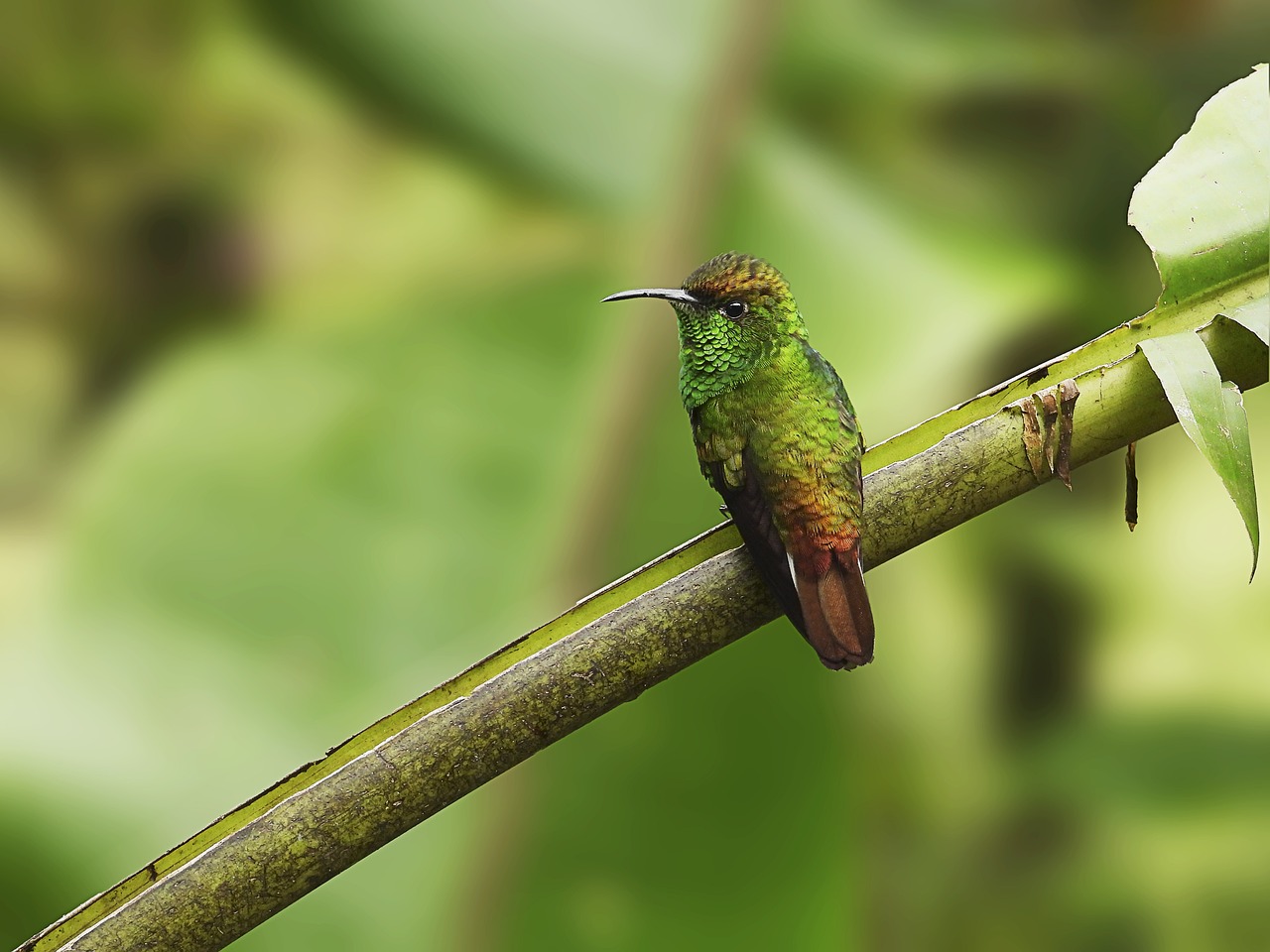
Fall Maintenance
As the vibrant colors of summer begin to fade and the cool breeze of fall sets in, it's essential to shift your garden care routine to ensure that your feathered friends continue to find a welcoming environment. is not just about tidying up; it's about preparing your garden to attract and sustain hummingbirds during their migration and beyond. By implementing a few key strategies, you can keep your garden alive with activity, even as the days grow shorter.
Start by clearing out spent annuals and dead foliage. While it may be tempting to leave everything as is, removing these remnants can prevent pests and diseases from taking hold. Additionally, consider leaving some perennials standing through the winter, as they can provide shelter and food sources for hummingbirds and other wildlife. As you tidy up, be mindful of the plants that are still flowering; they can be a vital food source for late-migrating hummingbirds.
Another crucial aspect of fall maintenance is ensuring that your hummingbird feeders are well-stocked and in good condition. As temperatures drop, it's essential to keep feeders clean and filled with fresh nectar. Hummingbirds will rely on these feeders more as natural nectar sources dwindle. Remember to check the feeders regularly; if the nectar freezes, it won't be accessible to the birds. You can prevent this by using a feeder with a built-in heater or by bringing the feeders indoors during particularly cold nights.
Furthermore, consider incorporating fall-blooming plants into your garden. Plants like sedum, autumn sage, and fuchsia are excellent choices that can provide sustenance for hummingbirds as they prepare for their long journey south. These plants not only add color to your garden but also attract hummingbirds that are still passing through.
Lastly, don’t forget about water sources. As the weather cools, natural water sources may become less available. Adding a shallow birdbath or a mister can provide essential hydration for hummingbirds. Ensure that the water is fresh and clean, and consider placing rocks in the bath to give the birds a safe landing spot. This small addition can make your garden a haven for these beautiful creatures.
By focusing on these fall maintenance strategies, you can create a nurturing environment that supports hummingbirds during their migration. Your garden can transform into a vibrant oasis, filled with activity and life, even as the leaves turn and the air becomes crisp. So, roll up your sleeves and prepare your garden for a delightful autumn experience!
- How often should I change the nectar in my hummingbird feeders during fall? It's best to change the nectar every few days, especially if temperatures are warm. In colder weather, check it regularly to ensure it hasn't frozen.
- What are some good plants to add for fall blooming? Consider planting sedum, autumn sage, and fuchsia, as these can attract hummingbirds during the fall season.
- Can I leave my feeders out during the winter? Yes, you can leave your feeders out, especially if you have species that stay in warmer areas during the winter. Just ensure they are cleaned and filled with fresh nectar.
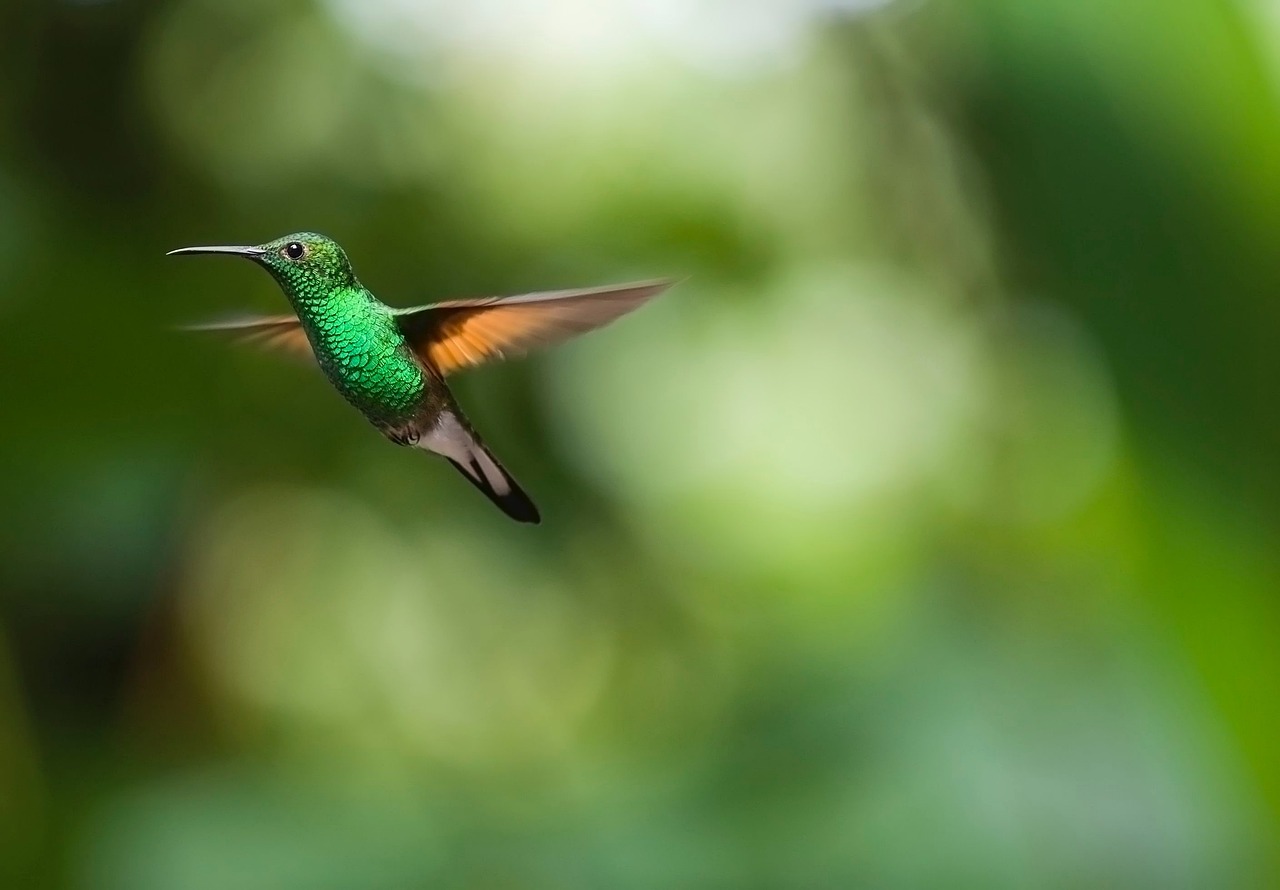
Common Hummingbird Species
When it comes to attracting hummingbirds to your garden, understanding the different species that frequent your area can significantly enhance your birdwatching experience. In North America, several species are commonly spotted, each with its unique characteristics and preferences. Learning about these species not only helps you identify them but also allows you to tailor your garden to meet their needs, ensuring they feel right at home.
The most prevalent species is the Ruby-throated Hummingbird, known for its striking emerald green back and vibrant ruby-red throat. This little marvel is a migratory bird, often returning to North America in the spring from its wintering grounds in Central America. To attract the Ruby-throated Hummingbird, consider planting native flowers that produce ample nectar, such as bee balm, salvia, and trumpet vine. These plants not only provide nourishment but also create a visually stunning landscape.
Another fascinating species is Anna's Hummingbird, which is particularly notable for its adaptability to various environments, including urban areas. This bird boasts a vibrant plumage with iridescent greens and pinks, making it a delightful sight in any garden. Unlike many other hummingbirds, Anna's Hummingbird does not migrate, allowing it to be a year-round resident in milder climates. To attract this species, you might want to include fuchsia and geraniums in your garden, as they are known favorites.
In addition to these, there are other noteworthy species such as the Black-chinned Hummingbird and the Calliope Hummingbird. The Black-chinned Hummingbird is easily recognizable by its distinctive black throat and is often found in the western United States. Meanwhile, the Calliope Hummingbird is the smallest bird in North America, known for its tiny size and remarkable long migrations. These species also benefit from a garden filled with nectar-rich plants and strategically placed feeders.
| Species | Distinctive Features | Preferred Plants |
|---|---|---|
| Ruby-throated Hummingbird | Emerald green back, ruby-red throat | Bee balm, salvia, trumpet vine |
| Anna's Hummingbird | Iridescent greens and pinks | Fuchsia, geraniums |
| Black-chinned Hummingbird | Black throat, common in the west | Columbine, penstemon |
| Calliope Hummingbird | Smallest North American bird | Lavender, wildflowers |
By familiarizing yourself with these common hummingbird species, you can create a more inviting environment in your garden. Remember that each species has its own preferences for food and habitat, so consider incorporating a variety of plants and feeder types to attract a wider range of visitors. With a little effort and attention to detail, your garden can become a thriving sanctuary for these beautiful birds.
Q: How can I tell which hummingbird species are visiting my garden?
A: Observing their colors, size, and behaviors can help you identify the species. Keeping a guidebook or using a bird identification app can also be helpful.
Q: What is the best time of year to attract hummingbirds?
A: Spring is ideal as many species return from migration. However, maintaining feeders and plants year-round can help attract them at any time.
Q: How often should I change the nectar in my feeders?
A: It's best to change the nectar every 3-5 days, especially in hot weather, to prevent fermentation and mold.
Q: Can I use food coloring in the nectar?
A: No, it's not recommended to use food coloring as it can be harmful to hummingbirds. Natural nectar from flowers is sufficient for their needs.
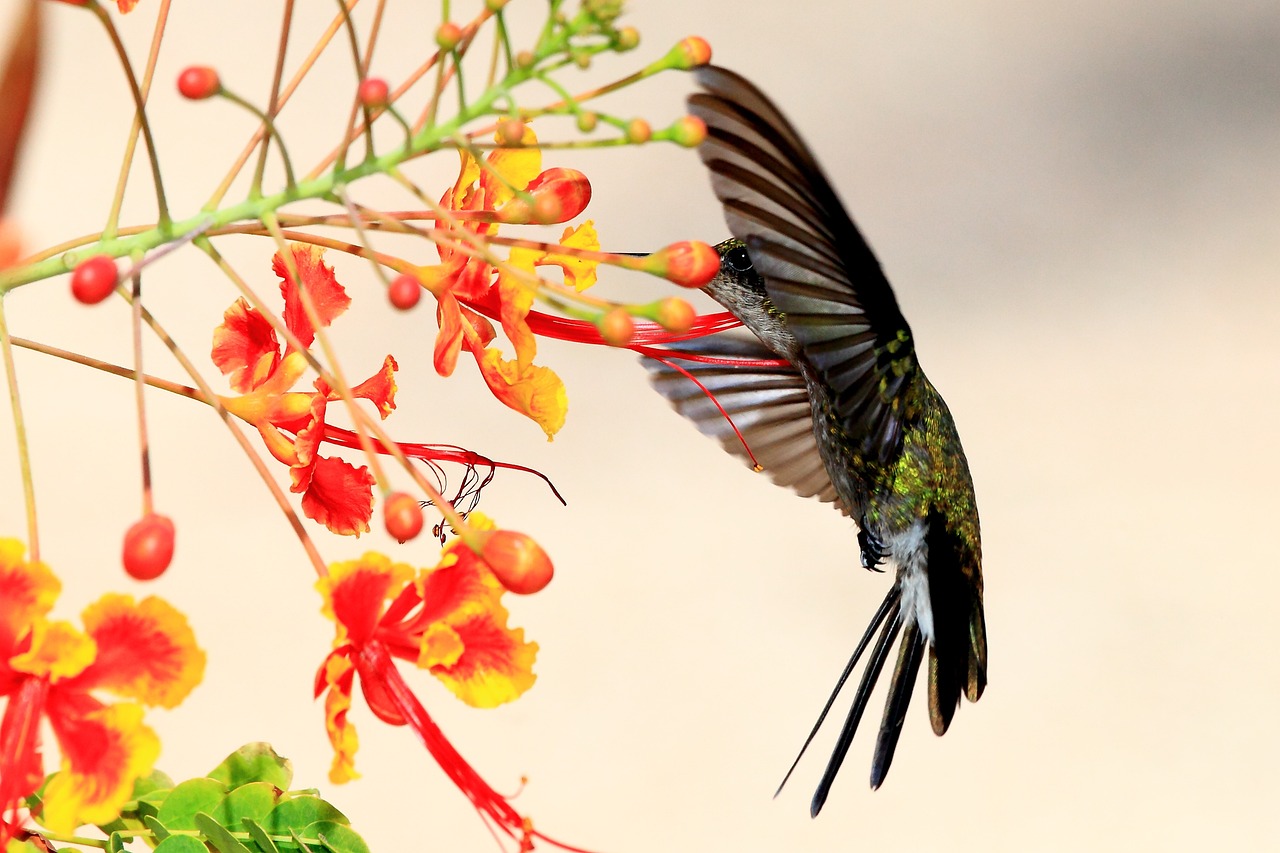
Ruby-throated Hummingbird
The is a dazzling gem of the avian world, renowned for its vibrant emerald green back and striking ruby-red throat, which glistens in the sunlight like a precious jewel. This species is the most common hummingbird found in North America, making it a favorite for birdwatchers and garden enthusiasts alike. If you're looking to attract these beautiful creatures to your garden, understanding their behaviors and preferences is key.
These tiny birds are not just visually captivating; they play a crucial role in pollination. As they flit from flower to flower in search of nectar, they inadvertently transfer pollen, helping plants reproduce. To create an inviting environment for Ruby-throated Hummingbirds, it's essential to plant a variety of nectar-rich flowers. Some of their favorites include:
- Bee Balm - This perennial plant is a hummingbird magnet, producing vibrant red, pink, or purple blooms.
- Salvia - With its tubular flowers, salvia is another excellent choice for attracting these birds.
- Columbine - The unique shape of columbine flowers makes them particularly appealing to hummingbirds.
- Trumpet Vine - This vigorous climber not only beautifies your garden but also provides a feast for Ruby-throated Hummingbirds.
Besides planting the right flowers, it's also vital to ensure that your garden offers a safe feeding environment. Ruby-throated Hummingbirds are known for their territorial behavior, especially the males, who will fiercely guard their feeding spots. By providing multiple feeders and planting flowers in clusters, you can create a more welcoming atmosphere, reducing competition and encouraging more birds to visit.
In addition to food sources, these birds also need water and shelter. Incorporating shallow water dishes or misters can attract them, as they enjoy bathing and drinking. Furthermore, consider adding shrubs or small trees where they can perch and feel secure. The right habitat will encourage Ruby-throated Hummingbirds not only to visit your garden but also to stay and breed.
Lastly, keep in mind that timing is everything. Ruby-throated Hummingbirds migrate to North America in the spring, typically arriving around mid-March to early April. Preparing your garden ahead of their arrival by ensuring your flowers are in bloom and feeders are stocked with fresh nectar will make your space irresistible. By understanding their needs and behaviors, you can create a vibrant sanctuary that attracts these delightful birds year after year.
Q: What is the best nectar recipe for hummingbirds?
A: The simplest recipe is to mix one part sugar with four parts water. Boil the mixture to dissolve the sugar, then let it cool before filling your feeders.
Q: How often should I clean my hummingbird feeders?
A: It's recommended to clean feeders every few days, especially in hot weather, to prevent mold and fermentation that can harm the birds.
Q: Do Ruby-throated Hummingbirds migrate?
A: Yes, they migrate south for the winter, typically traveling to Mexico or Central America, and return to North America in the spring.
Q: Can I attract other hummingbird species?
A: Yes, while the Ruby-throated Hummingbird is the most common, providing a diverse range of flowers and feeders can attract other species as well.
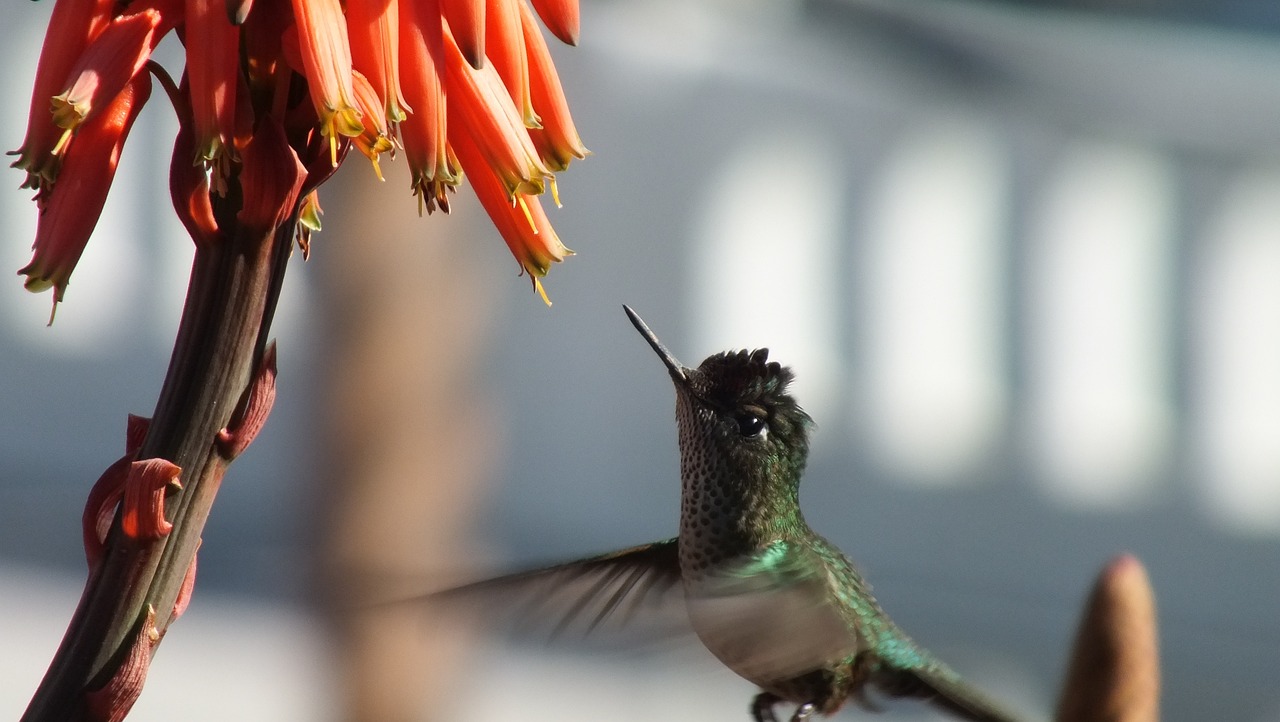
Anna's Hummingbird
The is a true gem of the avian world, renowned for its stunning plumage and remarkable adaptability. Found primarily along the western coast of North America, this species is unique as it can be spotted year-round in some regions, particularly in California. Unlike many of its migratory cousins, Anna's Hummingbirds have developed a knack for surviving in varying climates, which makes them a fascinating subject for bird enthusiasts and gardeners alike.
What sets Anna's Hummingbird apart is not just its vibrant green and iridescent purple feathers, but also its behavior. These little dynamos are known for their energetic flight patterns, often engaging in aerial displays that can leave observers in awe. They are highly territorial, especially during the breeding season, and will fiercely defend their feeding territories against rivals. To attract these captivating birds to your garden, consider planting a variety of nectar-rich flowers that bloom in succession, ensuring a continuous food supply.
When it comes to their habitat preferences, Anna's Hummingbirds are quite versatile. They can thrive in urban gardens, coastal areas, and even in mountainous regions. To create an inviting environment for them, incorporate plants such as salvia, penstemon, and fuchsia, which are known to be favorites among these birds. Additionally, providing shelter with shrubs or small trees can encourage them to nest in your garden. These plants not only serve as food sources but also offer safe havens for nesting, which is crucial for the survival of their young.
Another interesting aspect of Anna's Hummingbird is their unique courtship rituals. Males perform impressive dive displays to attract females, showcasing their agility and vibrant colors. This behavior is not just a spectacle; it plays a vital role in their mating success. By creating a garden that supports these birds, you not only enhance your outdoor space with beauty and life but also contribute to the conservation of these remarkable creatures.
In summary, attracting Anna's Hummingbird to your garden is a rewarding endeavor. By understanding their needs and preferences, you can cultivate an environment that encourages these stunning birds to visit and even settle down. Remember, the key is to provide a variety of nectar sources, safe nesting areas, and a little bit of patience as you wait for these delightful visitors to grace your garden.
- What is the best way to attract Anna's Hummingbird? Plant a variety of nectar-rich flowers and provide feeders filled with sugar water to attract them.
- Do Anna's Hummingbirds migrate? While some do migrate, many Anna's Hummingbirds are year-round residents in milder climates.
- What feeders are best for Anna's Hummingbird? Choose feeders with red accents, as they are particularly attracted to the color red.
- How often should I clean my hummingbird feeders? Clean your feeders every few days, especially in hot weather, to prevent mold and fermentation.
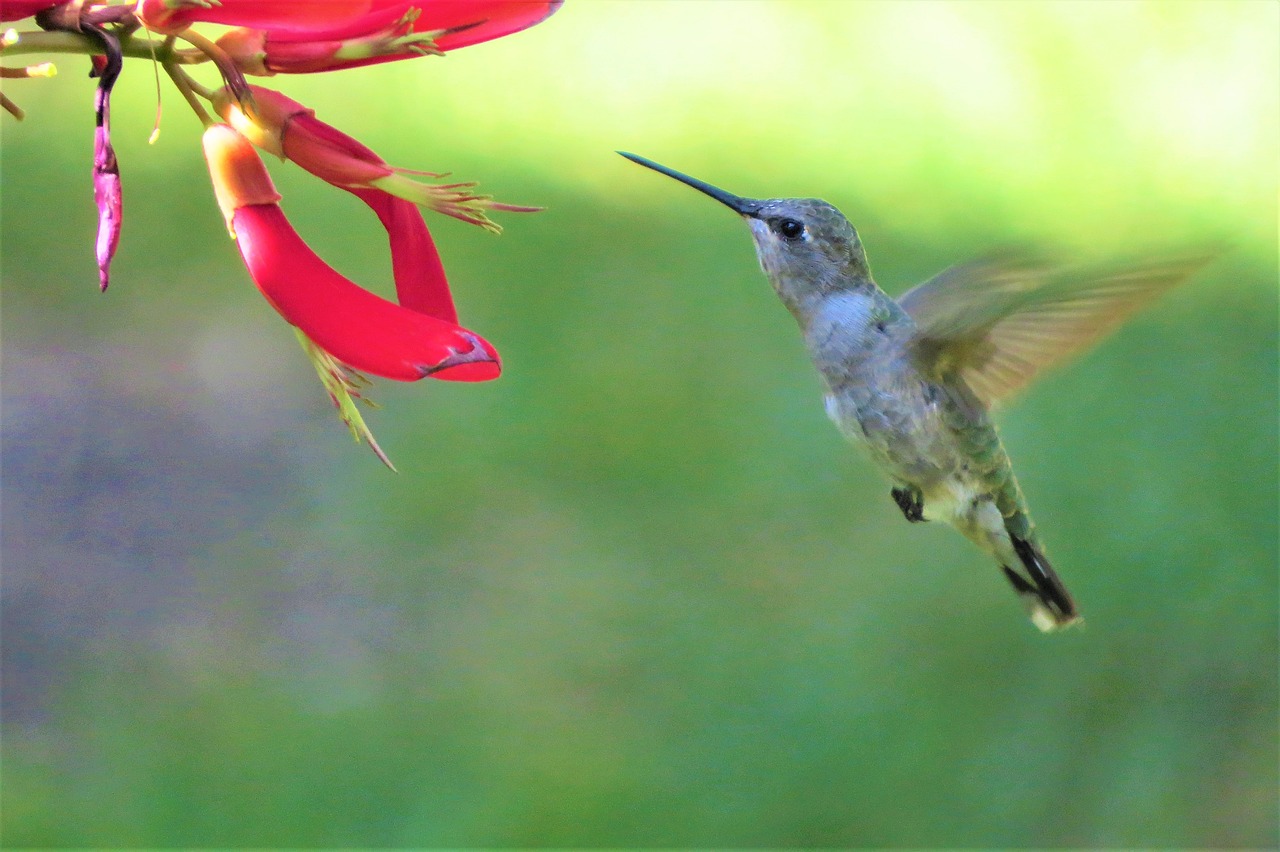
Attracting Hummingbirds Year-Round
When it comes to attracting hummingbirds year-round, a little planning goes a long way. These delightful creatures are not just seasonal visitors; with the right strategies, you can enjoy their vibrant presence throughout the entire year. Imagine your garden buzzing with life, filled with the bright colors of flowers and the rapid fluttering of tiny wings, even in the colder months! But how do you achieve this magical year-round attraction? Let’s dive into some effective approaches.
First and foremost, consider your feeding strategies. During winter, certain hummingbird species, like the Anna's Hummingbird, stay in milder climates. To cater to these resilient birds, it’s essential to keep your feeders clean and filled with fresh nectar. A simple recipe of four parts water to one part sugar will do the trick! Remember, never add red dye; it’s harmful to the birds. Additionally, using heated feeders can prevent the nectar from freezing, ensuring a reliable food source even during the chilliest days.
Next up is year-round planting. To maintain a continuous food supply, plant a variety of nectar-producing flowers that bloom at different times of the year. For instance, early bloomers like crocus and columbine can provide sustenance in spring, while late bloomers such as salvia and trumpet vine can keep the food flowing into fall. Here’s a quick table to help you visualize the best plants for each season:
| Season | Recommended Plants |
|---|---|
| Spring | Crocus, Columbine, Bee Balm |
| Summer | Salvia, Zinnias, Fuchsia |
| Fall | Trumpet Vine, Asters, Sedum |
| Winter | Hellebores, Winter Jasmine |
Creating a warm habitat is equally vital. Hummingbirds thrive in environments that provide shelter from harsh weather. Planting dense shrubs and trees not only offers protection but also creates safe nesting spots. Consider incorporating native plants into your garden, as they are more likely to attract local hummingbird species and provide the necessary shelter and food sources.
Finally, don’t forget about the importance of water sources. Hummingbirds need water just like any other bird, and incorporating shallow water dishes or misters can be a fantastic way to attract them. The sound of trickling water can draw them in, creating a serene oasis in your garden that they will want to visit frequently.
By combining these strategies—consistent feeding, diverse planting, creating warm habitats, and providing water—you can transform your garden into a hummingbird haven all year round. It’s not just about the flowers; it’s about creating a vibrant ecosystem that welcomes these beautiful birds, allowing you to witness their enchanting presence in every season!
- What type of feeder is best for year-round use? Glass feeders are often preferred for their durability and ease of cleaning, but heated feeders are essential in winter.
- How often should I change the nectar in the feeders? Change the nectar every 3 to 5 days, and more frequently in hot weather to prevent fermentation.
- Can I attract hummingbirds with just feeders? While feeders are great, incorporating native plants will enhance your garden's appeal and provide a natural food source.
- What should I do during the winter months? Keep your feeders clean and filled, and consider using heated options to prevent nectar from freezing.
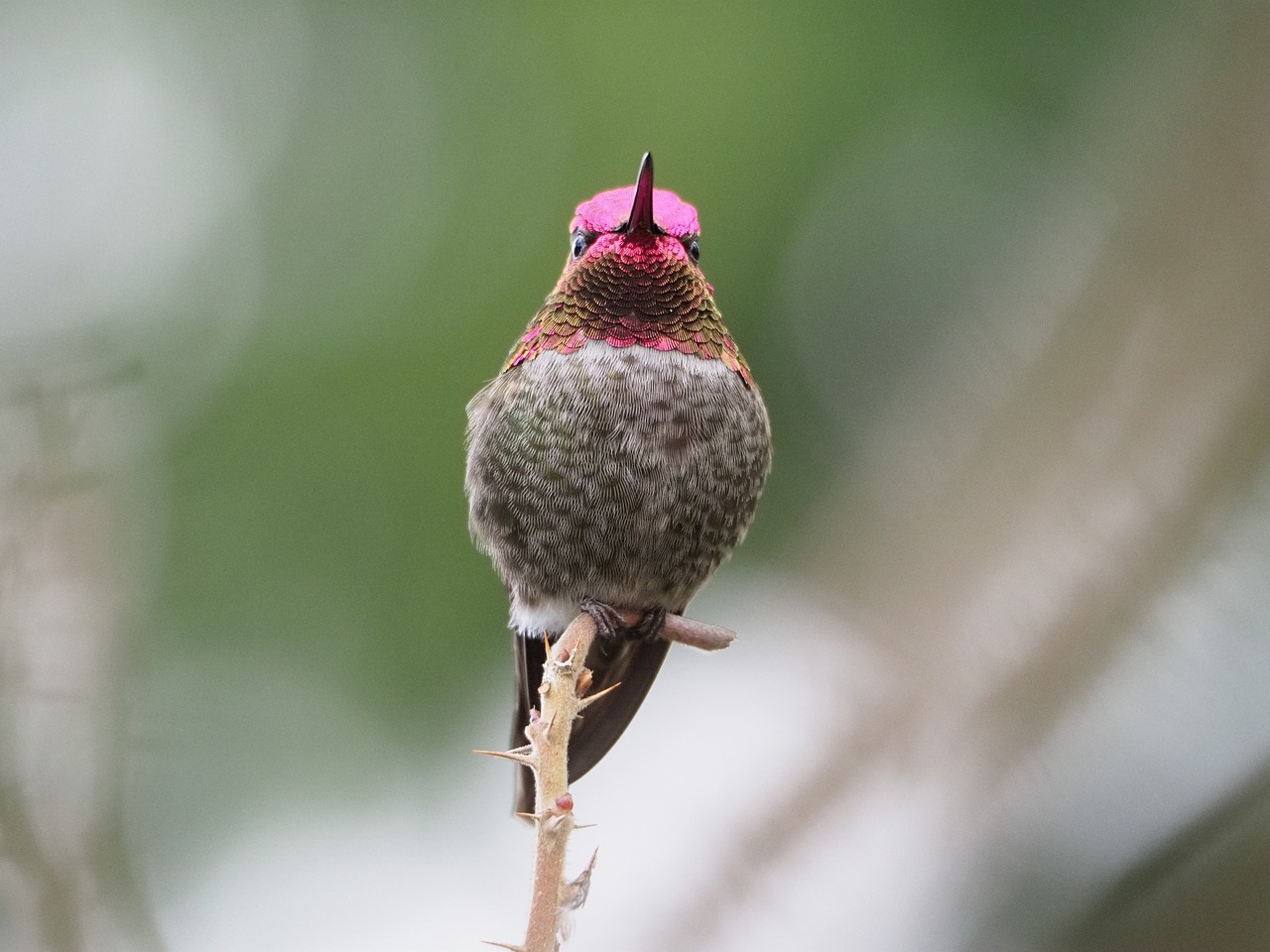
Winter Feeding Strategies
When the chill of winter sets in, many bird enthusiasts wonder how to continue attracting those delightful hummingbirds that bring life and color to our gardens. While most hummingbirds migrate to warmer climates, some species, like the Anna's Hummingbird, choose to stay in milder regions. To ensure these resilient birds receive the nourishment they need during the winter months, it's essential to adapt your feeding strategies accordingly.
First and foremost, it's vital to maintain your hummingbird feeders throughout the winter. This means regularly checking the feeders to prevent the nectar from freezing. A simple solution is to use a heated feeder or wrap your feeder with heat tape. However, if those options aren't available, you can take a more hands-on approach by bringing your feeders inside during the coldest nights and refilling them with fresh nectar during the day.
Speaking of nectar, the recipe remains the same: a mixture of one part sugar to four parts water. Boil the water to dissolve the sugar, then allow it to cool before filling your feeders. This mixture not only provides essential energy for the birds but also helps to keep the feeder from freezing as quickly as plain water would. If you notice that the nectar is freezing despite your efforts, consider placing the feeder in a sheltered area, perhaps near a wall or under an awning, where it can receive some warmth from the sun.
Additionally, be mindful of the placement of your feeders. Position them in spots that are protected from harsh winds and snow. Hummingbirds are less likely to visit feeders that are exposed to the elements, so providing them with a cozy, sheltered spot can make all the difference. You might also want to create a more inviting atmosphere by adding some evergreen plants or winter-blooming flowers nearby. These plants not only provide additional food sources but also serve as natural perches for the birds while they feed.
Moreover, consider adding a water source to your garden. Hummingbirds need water just as much as they need nectar, especially during the dry winter months. A shallow dish filled with fresh water or a small fountain can attract these birds and provide them with a much-needed drink. Just be sure to change the water regularly to keep it clean and free from ice.
Lastly, it’s important to remember that while you may be providing food and water, the environment should still feel safe for the hummingbirds. Avoid using pesticides or chemicals in your garden, as these can be harmful to the birds. Instead, embrace a more natural approach to gardening that encourages a healthy ecosystem, which, in turn, will attract not just hummingbirds but a variety of wildlife.
By implementing these winter feeding strategies, you can create a haven for hummingbirds even in the coldest months. Not only will you enjoy watching these beautiful creatures flit about your garden, but you'll also be contributing to their survival during a challenging time of year.
- How often should I change the nectar in winter? It’s best to change the nectar every few days, especially if the temperatures are above freezing. If it’s particularly cold, check daily to ensure it hasn’t frozen.
- Can I use food coloring in the nectar? No, avoid using food coloring as it can be harmful to hummingbirds. The natural color of the nectar is enough to attract them.
- What should I do if I see a hummingbird at my feeder during winter? Keep your feeder filled and clean. These birds need your help to survive the winter!
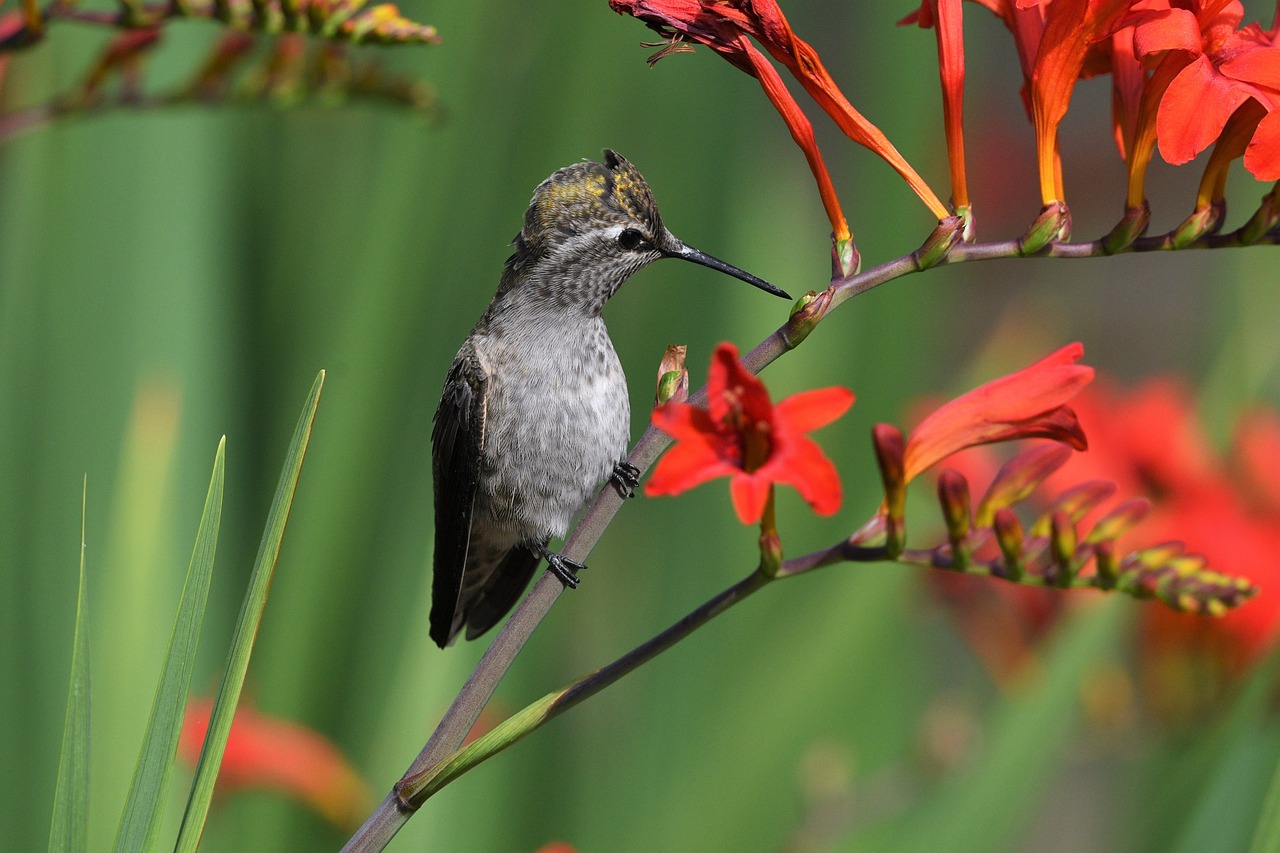
Year-Round Planting
When it comes to attracting hummingbirds, is a game changer. Imagine a garden that’s not just a seasonal spectacle but a vibrant buffet for these delightful creatures all year long! By carefully selecting a variety of nectar-producing flowers that bloom at different times, you can ensure a steady food source for hummingbirds, making your garden their favorite pit stop.
Start by considering the seasonal bloom times of your plants. For instance, early bloomers like crocuses and columbines can provide nourishment as hummingbirds return from their winter migration. Then, as spring transitions into summer, plants such as bee balm and trumpet vine take center stage with their rich nectar. Finally, as fall approaches, you can plant asters and sedums, which will provide sustenance just when hummingbirds are preparing for their long journey south.
To help you visualize this concept, here's a simple table that outlines some excellent choices for year-round planting:
| Season | Plant Name | Bloom Time |
|---|---|---|
| Spring | Crocus, Columbine | March - May |
| Summer | Bee Balm, Trumpet Vine | June - August |
| Fall | Asters, Sedums | September - November |
In addition to selecting the right plants, consider their placement within your garden. Grouping plants with similar bloom times can create a stunning visual display that attracts hummingbirds from afar. Think of it as hosting a year-round party where the guest list is exclusively hummingbirds! Moreover, incorporating a mix of colors and heights will add depth to your garden, making it even more inviting.
Don’t forget about the importance of maintenance. Regularly deadheading spent blooms encourages new growth and prolongs flowering times, ensuring that your garden remains a hotspot for hummingbirds. Also, be sure to provide ample water sources and shelter, as these elements are crucial for creating a welcoming environment. After all, a well-maintained garden not only attracts hummingbirds but also enhances your outdoor space, turning it into a sanctuary of life and color.
In summary, is about more than just aesthetics; it's about creating a thriving ecosystem that supports hummingbirds and brings joy to your garden. By planning your planting schedule and choosing the right plants, you can ensure that your garden is a constant source of food and shelter for these beautiful birds, allowing you to enjoy their presence throughout the year.
- What types of flowers are best for attracting hummingbirds?
Flowers that are tubular in shape and rich in nectar, such as trumpet vine, bee balm, and salvia, are particularly attractive to hummingbirds. - How often should I refill my hummingbird feeders?
It’s best to refill feeders every few days, especially in hot weather, to ensure the nectar remains fresh and appealing. - Can I use food coloring in nectar?
No, it’s not recommended to use food coloring in nectar as it can be harmful to hummingbirds. Stick to a simple sugar-water mixture.
Frequently Asked Questions
- What plants are best for attracting hummingbirds?
To attract hummingbirds, it's essential to choose native flowering plants that produce nectar. Some popular options include bee balm, salvia, columbine, and trumpet vine. These plants not only provide food but also create a vibrant and colorful garden.
- How do I set up a hummingbird feeder?
Setting up a hummingbird feeder is simple! Choose a feeder with bright colors, fill it with a homemade nectar solution (1 part sugar to 4 parts water), and hang it in a visible location. Make sure to clean the feeder regularly to prevent mold and ensure the nectar stays fresh.
- What is the difference between glass and plastic feeders?
Glass feeders are often more durable and easier to clean, while plastic feeders are lightweight and less likely to break. However, plastic can degrade over time, so consider your local conditions and how often you plan to clean the feeder when making your choice.
- Where should I place my hummingbird feeders?
For maximum visibility, place your feeders in a sunny spot, ideally near flowers that hummingbirds love. Ensure they are also sheltered from strong winds and predators. A good rule of thumb is to hang them about 5-6 feet off the ground.
- How can I provide water for hummingbirds?
Hummingbirds enjoy water sources like shallow dishes or misters. You can create a small water feature or simply fill a dish with fresh water. Just be sure to change the water regularly to keep it clean and inviting!
- When should I prepare my garden for hummingbirds?
Spring is the best time to prepare your garden for hummingbirds as they return from migration. Start planting nectar-rich flowers and setting up feeders in early spring to welcome them back to your garden.
- What are some common hummingbird species I might see?
The Ruby-throated Hummingbird is the most common in North America, but you might also spot Anna's Hummingbird, known for its vibrant plumage. Familiarizing yourself with these species can enhance your birdwatching experience!
- How can I attract hummingbirds year-round?
To attract hummingbirds throughout the year, plant a variety of nectar-producing flowers that bloom in different seasons. Additionally, adjust your feeding strategies during the winter to cater to any species that may remain in warmer areas.



















